Local Icons Shed Light on What Makes the Darkest Days of the Year so Alluring in Tasmania
To celebrate Tasmania’s Off Season Rolling Stone took on an epic journey across three of Tasmania's most treasured locations
To celebrate Tasmania’s Off Season Rolling Stone took on an epic journey across three of Tasmania’s most treasured locations. First up, we had the pleasure of meeting local songstress Ange Boxall as she shared some fascinating insights into the slice of paradise she calls home, the east coast of Tasmania. Next, we spent a day with singer/songwriter Maddy Jane as she took us around Bruny Island, where she and her family have lived for many generations. Then we spent a day with the local rock band Luca Brasi, who were generous enough to show us around the magnificent city of Hobart. One resounding theme was that Tasmania comes alive in winter like nowhere else. So come with us as we explore the joys of Tasmania in the Off Season.

Image: Jesse Hunniford
East coast
This gourmet food bowl of a region is perhaps most famous for the larapuna / Bay of Fires area, with its clear azure seas and granite rocks splattered in orange lichen, or the alluring white sands of Wineglass Bay. Yet, this spectacular region has so much more to offer. In partnership with Tourism Tasmania, Rolling Stone had the pleasure of speaking with Tasmanian east coast local Ange Boxall about what she finds most enchanting about the region she calls home.
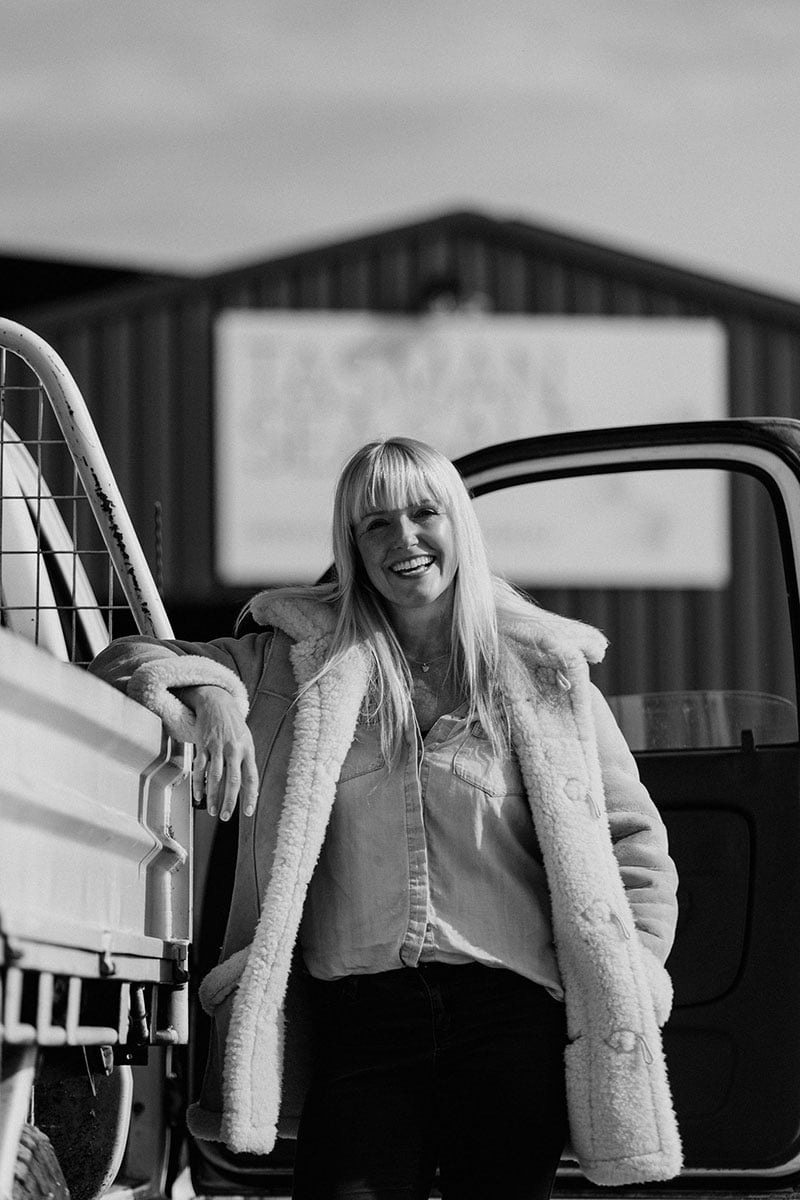
Image: Jesse Hunniford
Love Music?
Get your daily dose of everything happening in Australian/New Zealand music and globally.
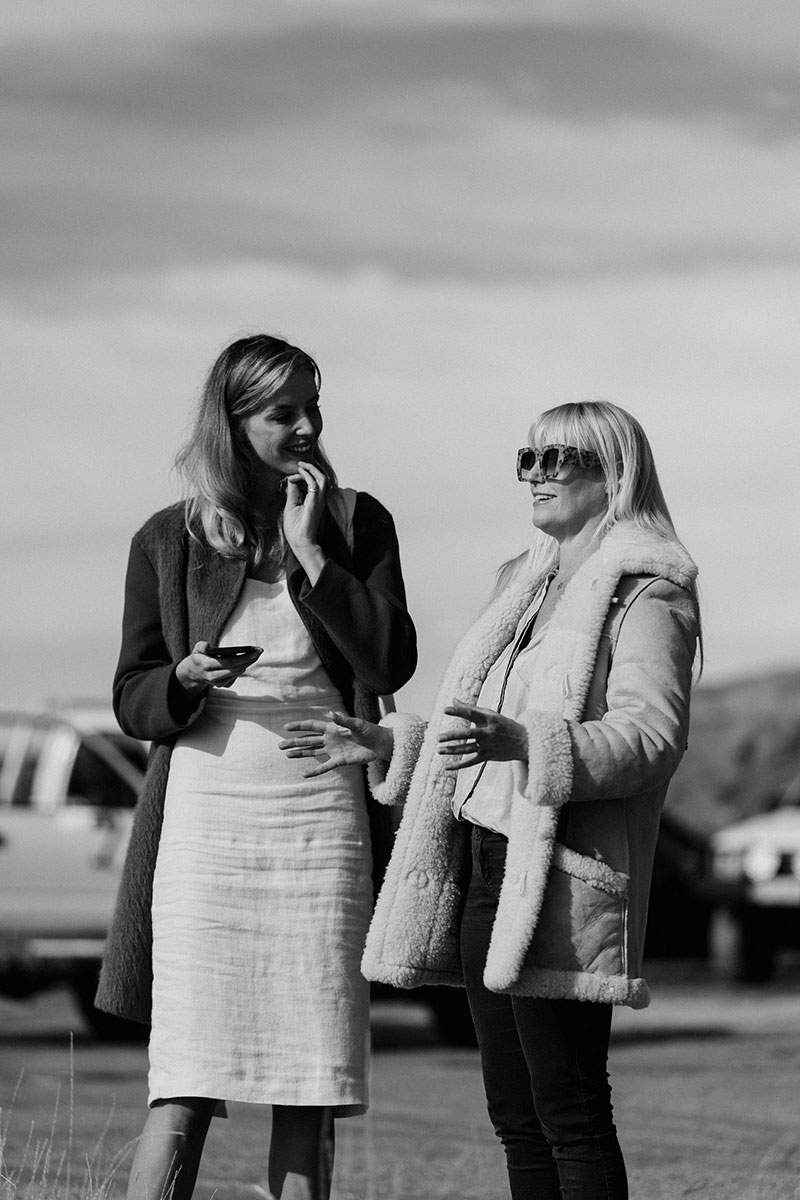
Image: Jesse Hunniford
It’s a frosty winter’s morning, but the sky is piercing blue, and the sun begins to permeate my cold body. We arrive at Tasman Sea Salt, where we meet Ange. As we pull up, Ange is beaming at us and waving. As we begin talking, I am enamoured by her warm spirit, infectious laugh, and smile. Ange lived between London and Nashville for over a decade before moving back home to her dream location on the east coast of Tasmania with her family. When asked to describe her musical style, Ange cites country and female power rockers from the 1970s and ‘80s as significant influences. “It’s sort of a country style with a fleck of Fleetwood Mac, so it’s described as more of an Americana sound than country,” she says. “In my thirties, my music was more about love and relationships,” she muses. “Now in my forties and moving back to Tasmania, I feel like it’s gone back to being sort of raw and wild, and I do feel like the landscape, the air, the elements all have an effect. I really do.” She tells me that her music has taken on a broader world perspective and is less intrapersonal than before. “The new album (Skipping Stones) has many protest references about various things that I feel strongly about,” she says.
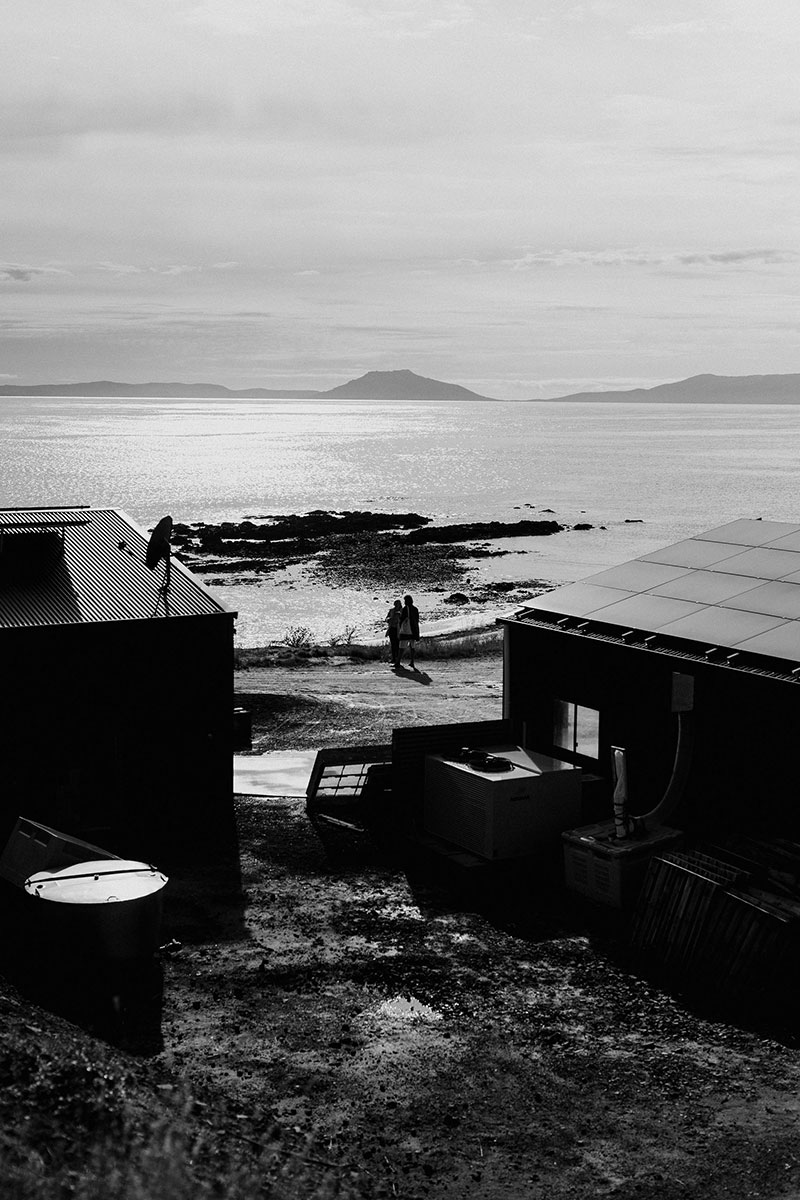
Image: Jesse Hunniford
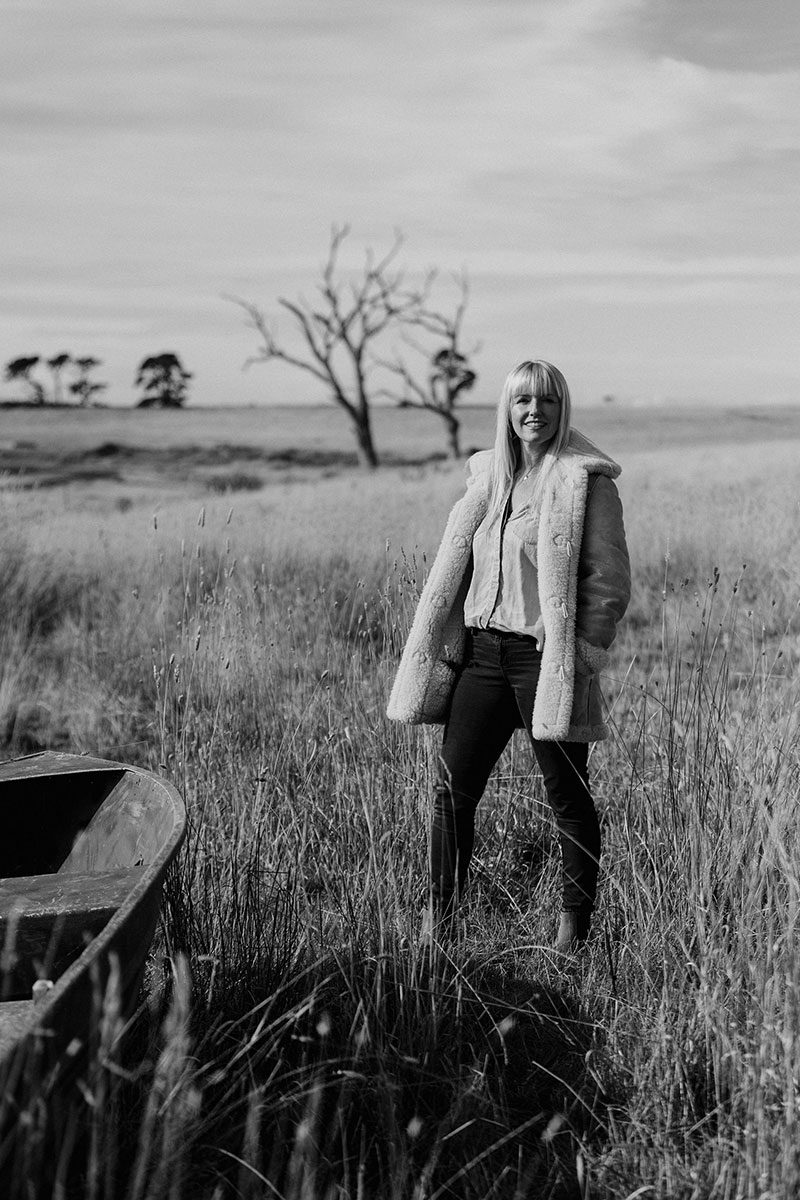
Image: Jesse Hunniford
Ange is wearing a Sherpa jacket and tells me it’s her go-to when she wants to make sure she doesn’t feel the cold. She tells me this is her favourite time of year, and I ask her what she loves most about it. She tells me that she feels the most creatively inspired in the wintertime. “Maybe it’s because you’re more contained inside,” she ponders. “I like to sit by a window so that I can be warm inside, but I’ll be looking out at the beautiful blue skies; it’s conducive to writing or creating anything,” she tells me. “I love watching a fire, I don’t watch much television, but I could sit and watch a fire all night. And I actually love going to the beach in winter even more than I do in summer- it’s just so stunning when it’s misty and gloomy with dramatic skies.” When asked about her favourite beaches, her face lights up like a child’s. “I really love Spiky Beach,” she says. “There are beautiful rock formations, and you can almost imagine little fairies living there. It can get a wild surf break coming in, and you get these amazing black rocks with orange lichen on them. There’s a cave there, and sometimes I sit in there and just ponder. I love all the national parks, too,” she says. “Douglas Apsley is really stunning. It has a lovely big swimming hole and beautiful walks along the river’s edge. I love Wineglass Bay – it’s just magnificent, and I never get sick of it. As you pull in, you see the Hazards mountains, and they’re something else. Really stunning.”
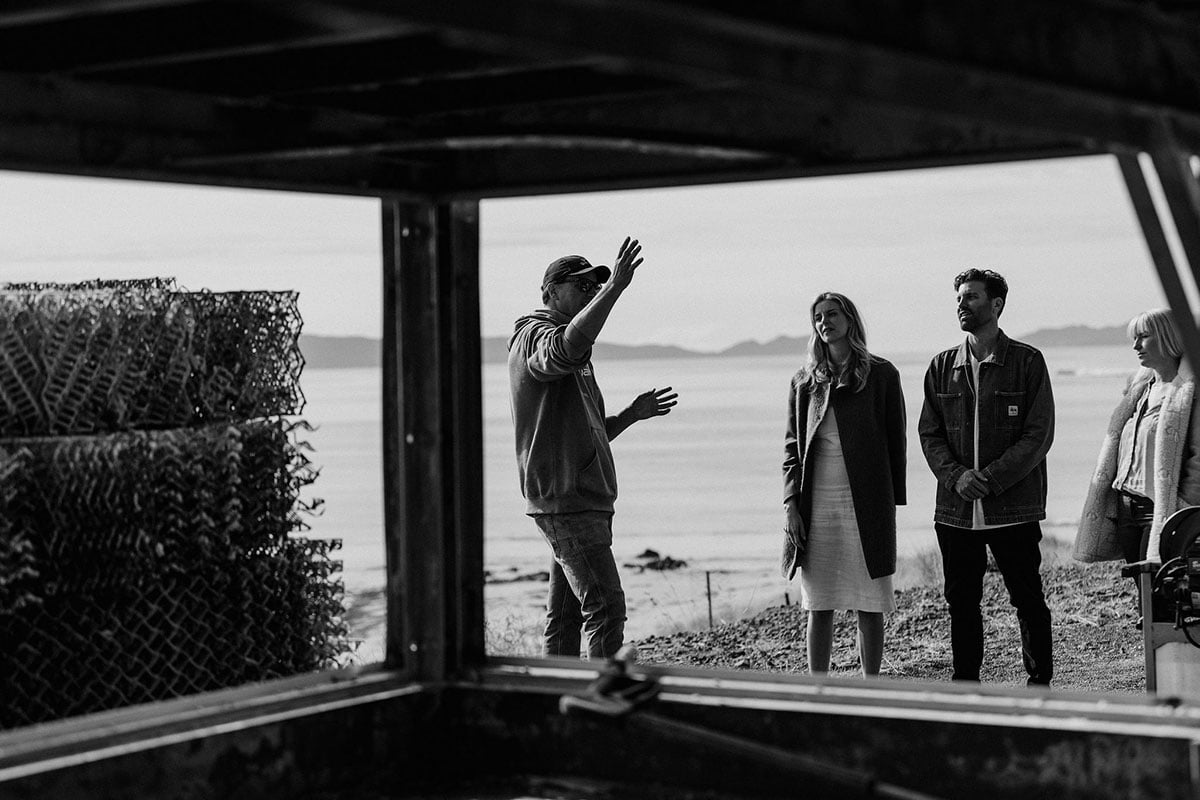
Image: Jesse Hunniford
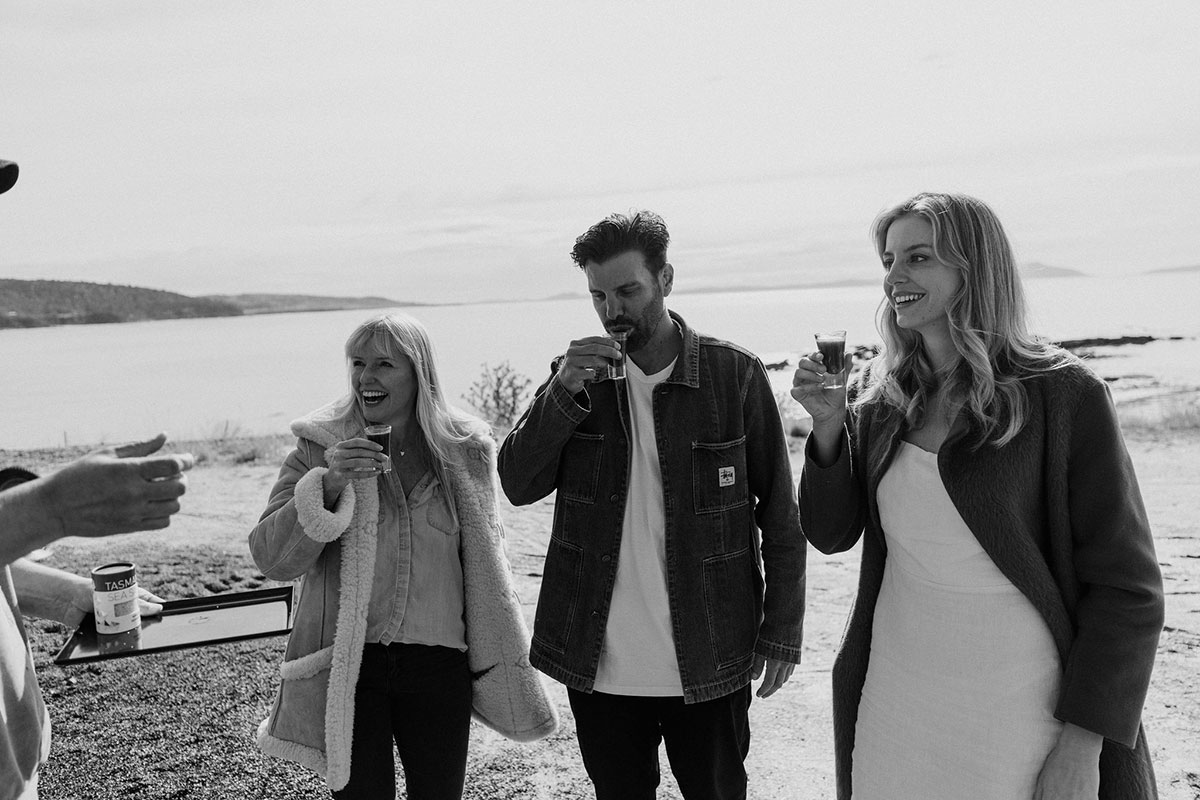
Image: Jesse Hunniford
We are interrupted to let us know it’s time to take a tour of the saltworks. We look over towards the steel shed whirring with machinery, and I meet the gaze of Chris Manson, who co-founded Tasman Salt with his wife Alice Laing. He points out over Mayfields Bay and smiles, “That’s 99% of our marketing right there,” he says, and his comment needs no further explanation. The translucent blue water is hemmed by golden-hued farmland, and it’s no surprise that we’re looking out at some of the most pristine oceans in the world. Chris offers us a shot of warm, umami mushroom broth seasoned with their wakame seaweed salt. “That’s delicious,” says Ange, and I couldn’t agree more.

Image: Jesse Hunniford
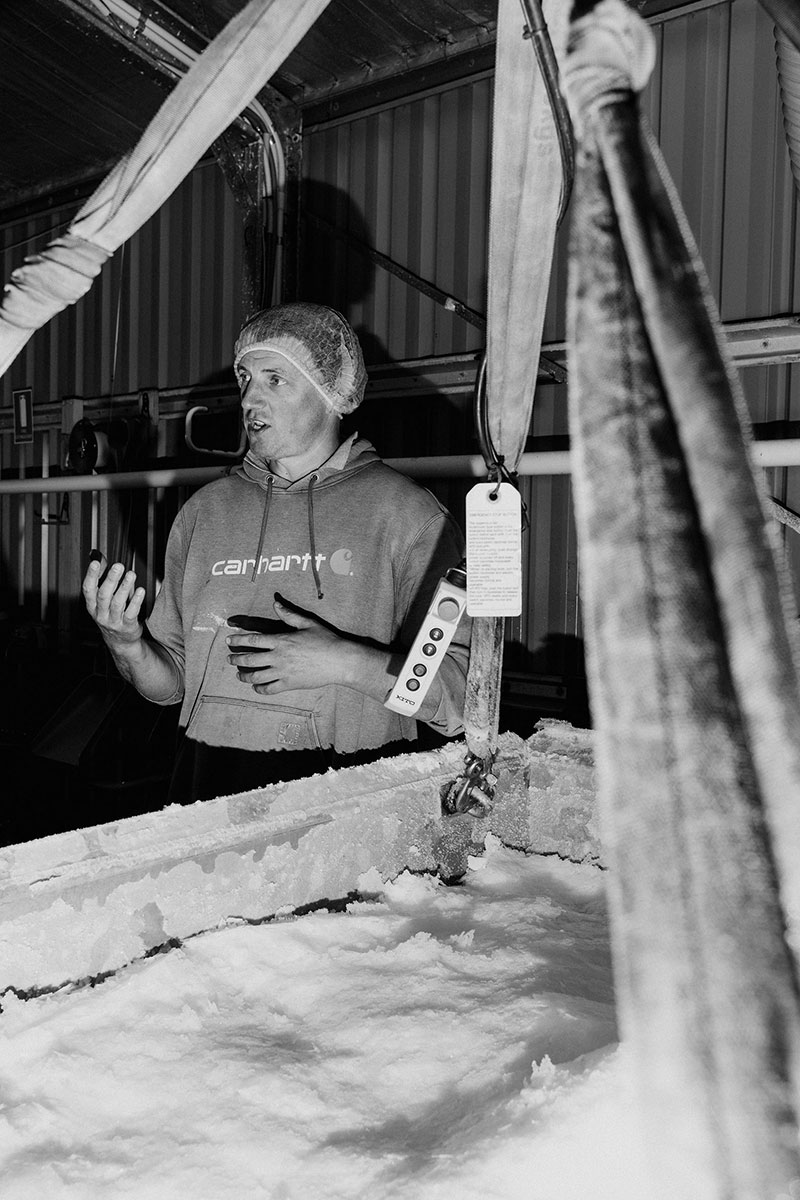
Image: Jesse Hunniford
Chris and Alice have been harvesting sea salt from Tasmania’s pristine east coast since 2013, producing pure white flakes with an incredible depth of flavour. They offer a ‘Salt Sommelier’ tour, which gives visitors a chance to learn about their unique salt harvesting process. You’ll also learn how salt impacts flavour while sampling a menu of small bites that pair their sea salt with locally sourced produce and optional wine pairing from local winery Mayfield Estate.
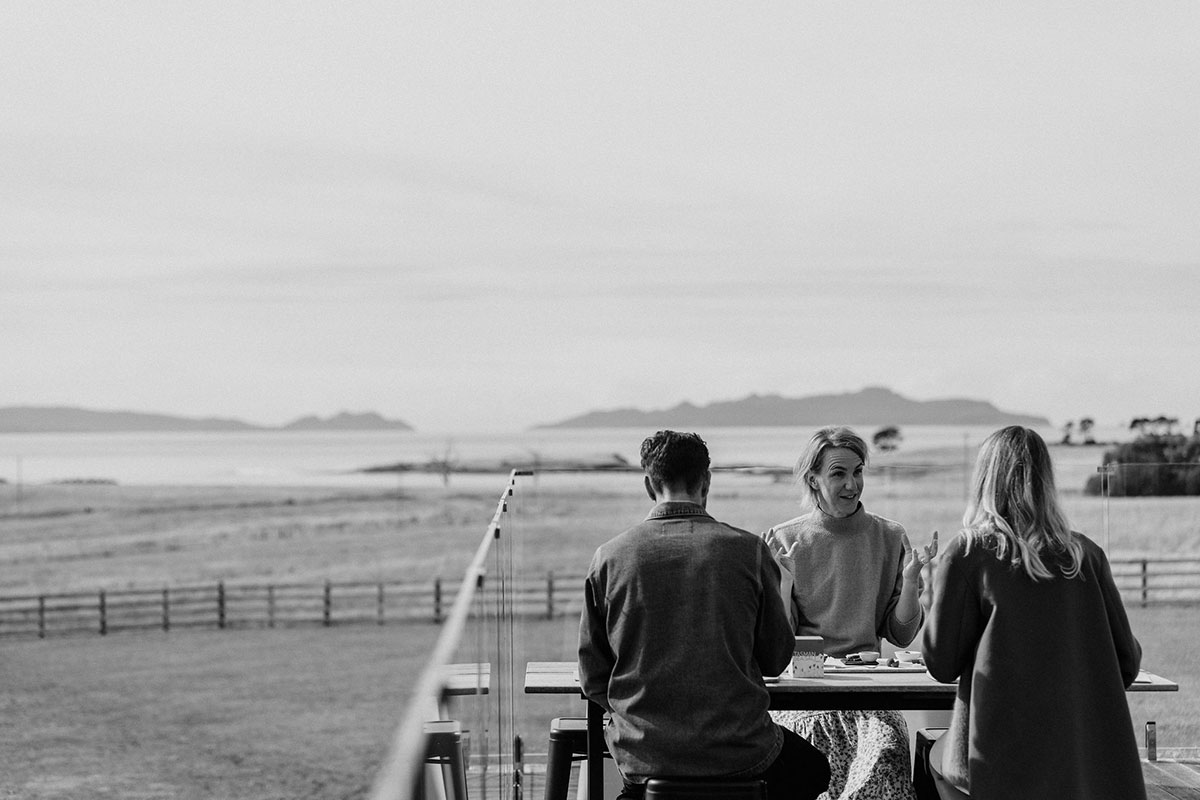
Image: Jesse Hunniford
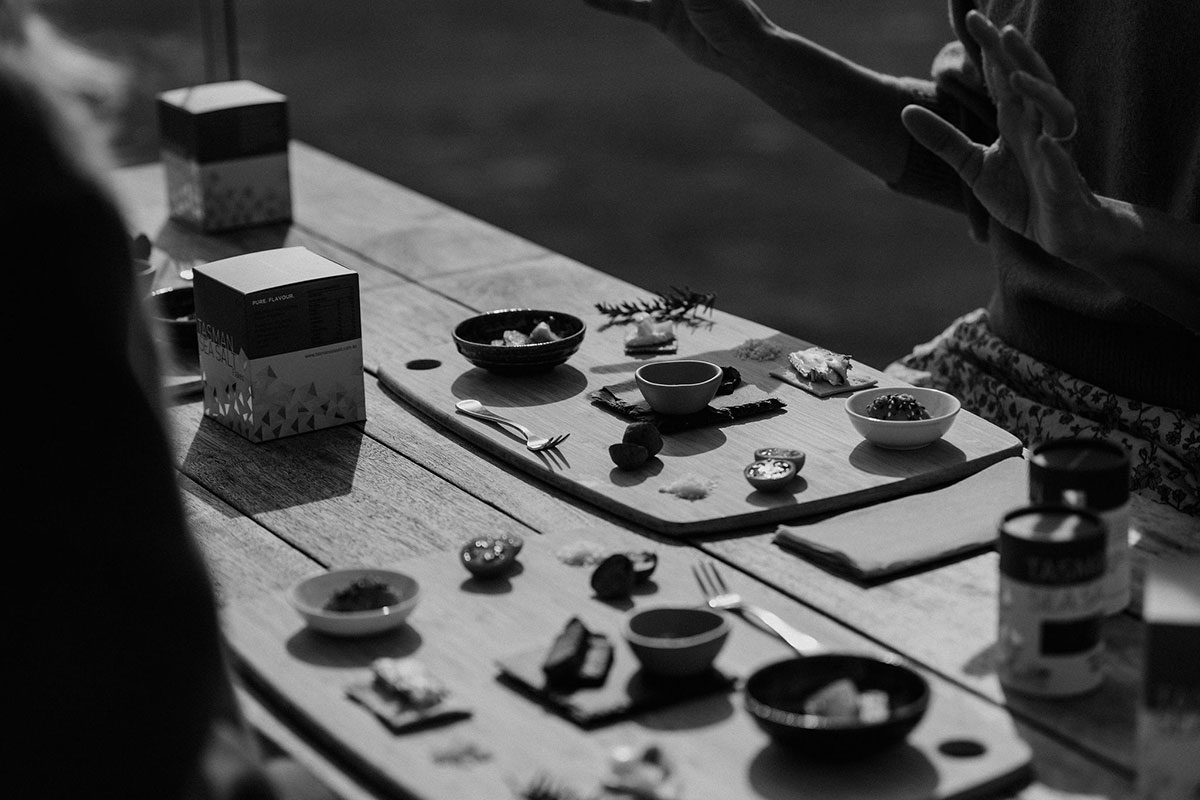
Image: Jesse Hunniford
Bellies full and eager to see more of this beautiful state, we continue on. We take a 20-minute ferry ride from Triabunna, a small town on Tasmania’s east coast and arrive at Maria Island National Park. The island feels uninhibited and serene due to its lack of cars. We are told we can explore on foot or on a push bike and choose the latter to see as much of the island as possible.
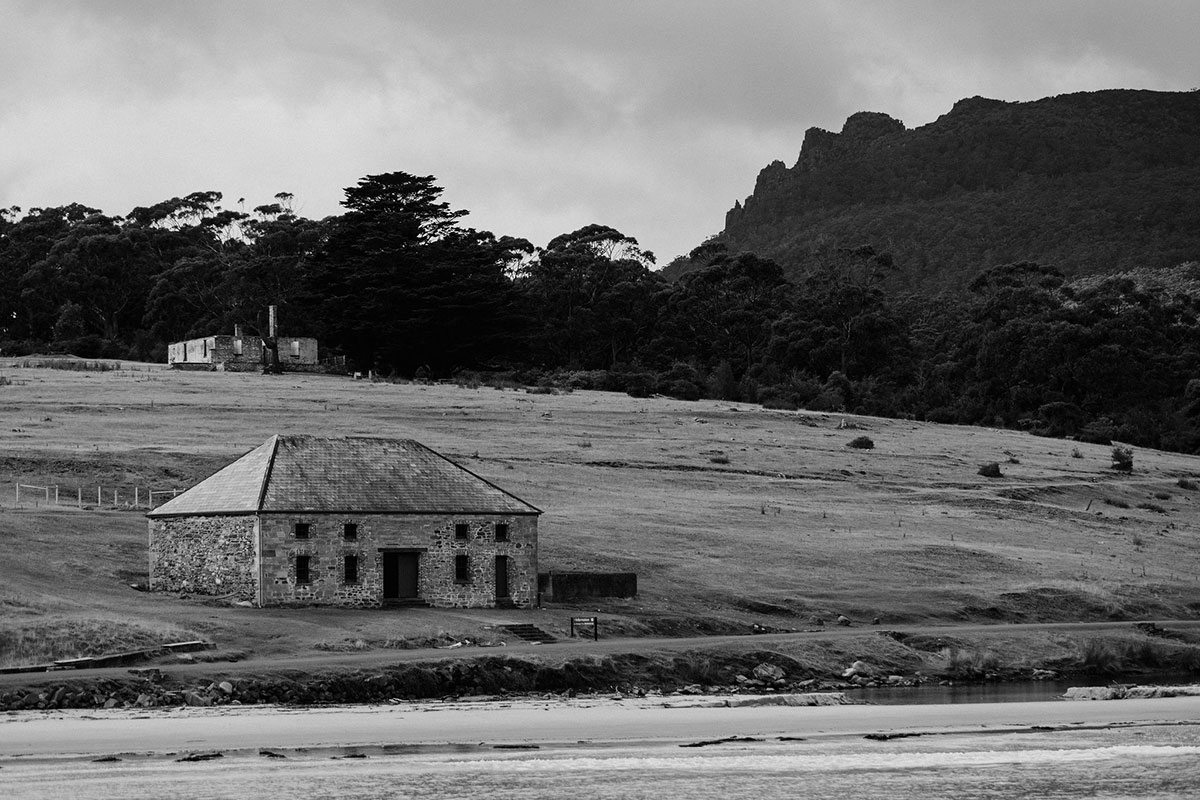
Image: Jesse Hunniford
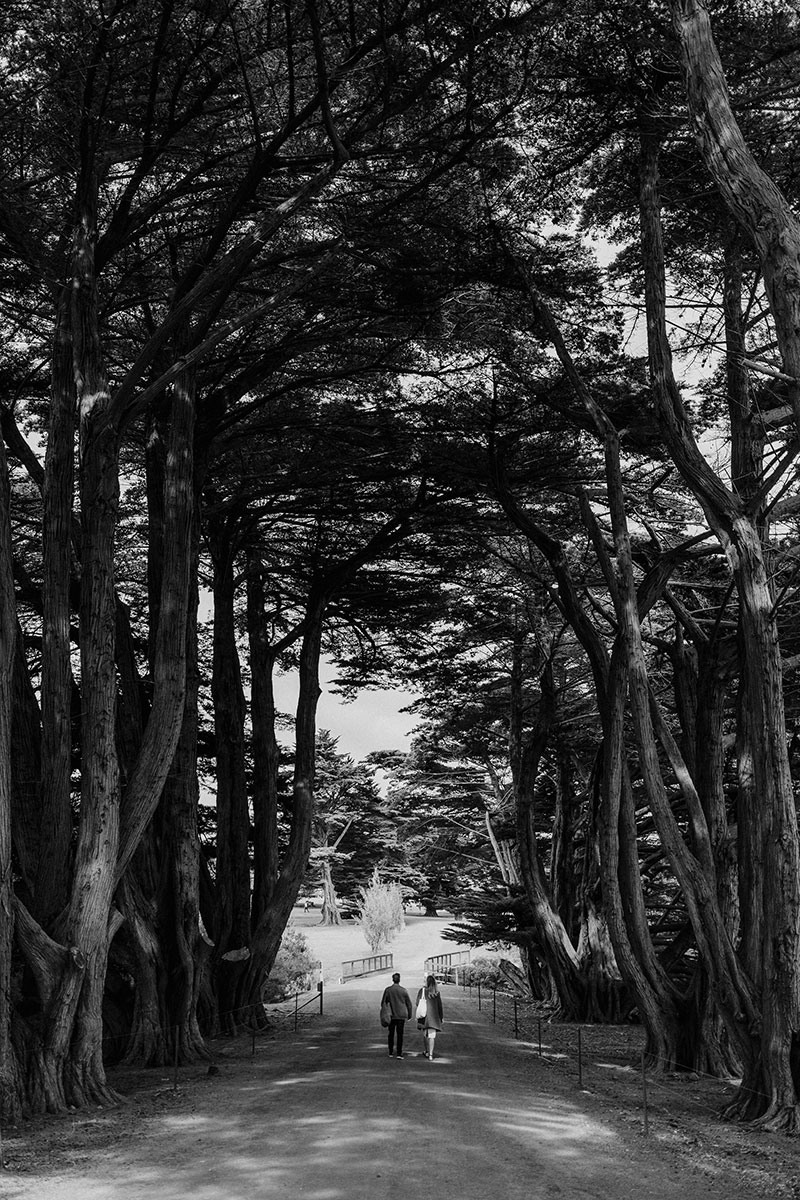
Image: Jesse Hunniford
As we ride through an enchanting eucalyptus forest, wombats, wallabies, and forester kangaroos abound. The stillness of the island allows for the flowing music of birdsong. I look up at the tiny feathered creatures that decorate the sky. We are told that Maria Island has 125 bird species, with 11 of Tasmania’s endemic species found here, including the endangered swift parrot and forty-spotted pardalote. Tasmanian devils and pademelons thrive on the island and are usually spotted at dusk or dawn. We ride past Shoal Bay, and I am mesmerised by the clear blue water and seclusion of the bay. These vast stretches of water are home to abundant marine life, including seals, whales and dolphins.
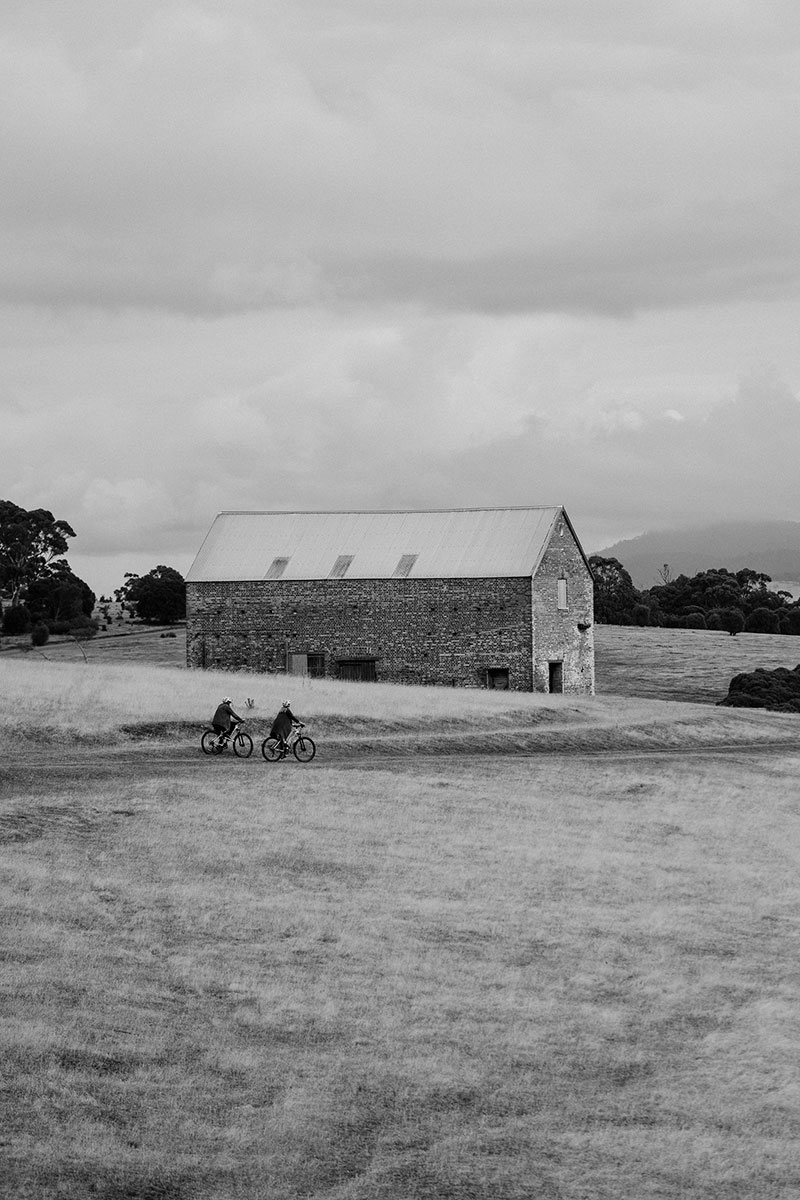
Image: Jesse Hunniford
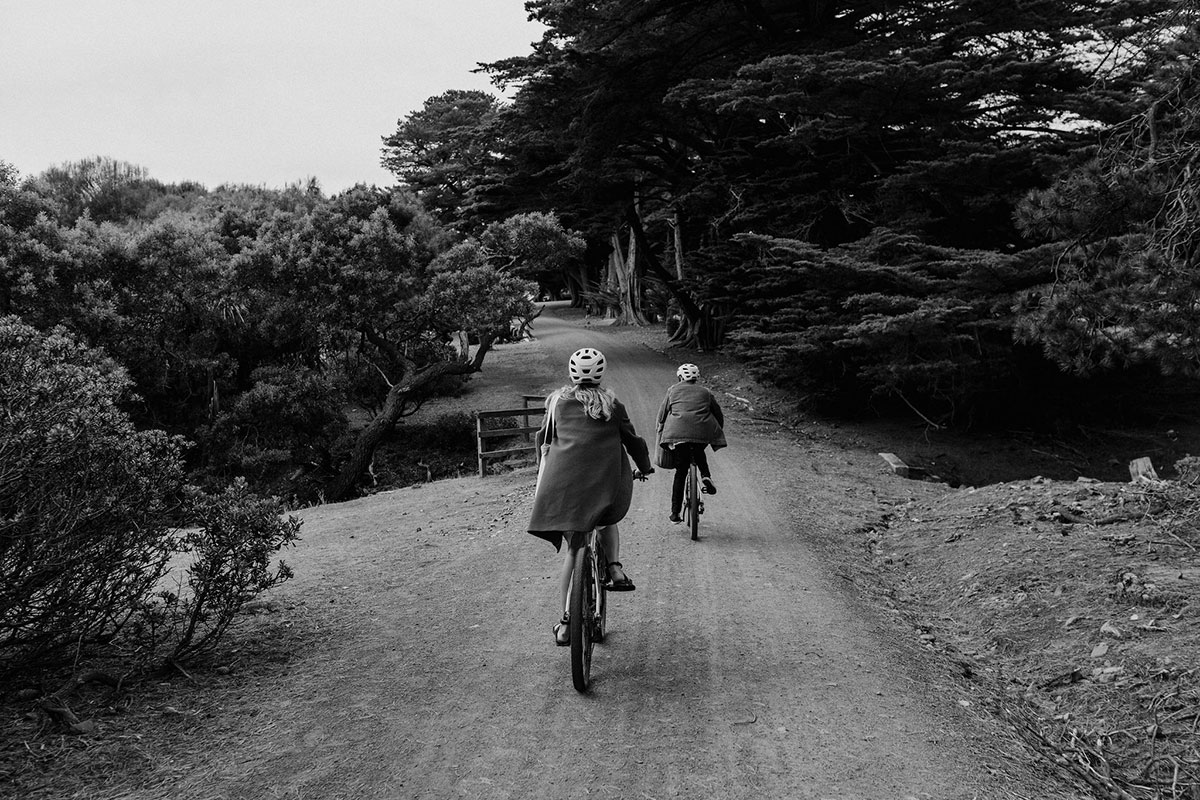
Image: Jesse Hunniford
As we look out over Hopground Beach, clutching at the swim caps and towels offered to us by the captain of Encounter Maria ferry, we decide this is where we’ll take a cold plunge into the ocean. We look out at the shimmering sand that sweeps around the edge of the gently ebbing blue sea. I strip down to my bathers, then begin to run into the water, letting the cold envelope my body before my mind can protest. As the chilly water wraps around my body like a blanket, there is a sense of discomfort for a few seconds before my body begins to acclimatise. Out in the distance, streams of throbbing light saturate the water’s surface with a golden haze, and I feel completely in awe of the surrounding beauty. The water has invigorated me and enlivened my soul. I emerge from the water feeling calm and present, allowing the moment to take hold of me.
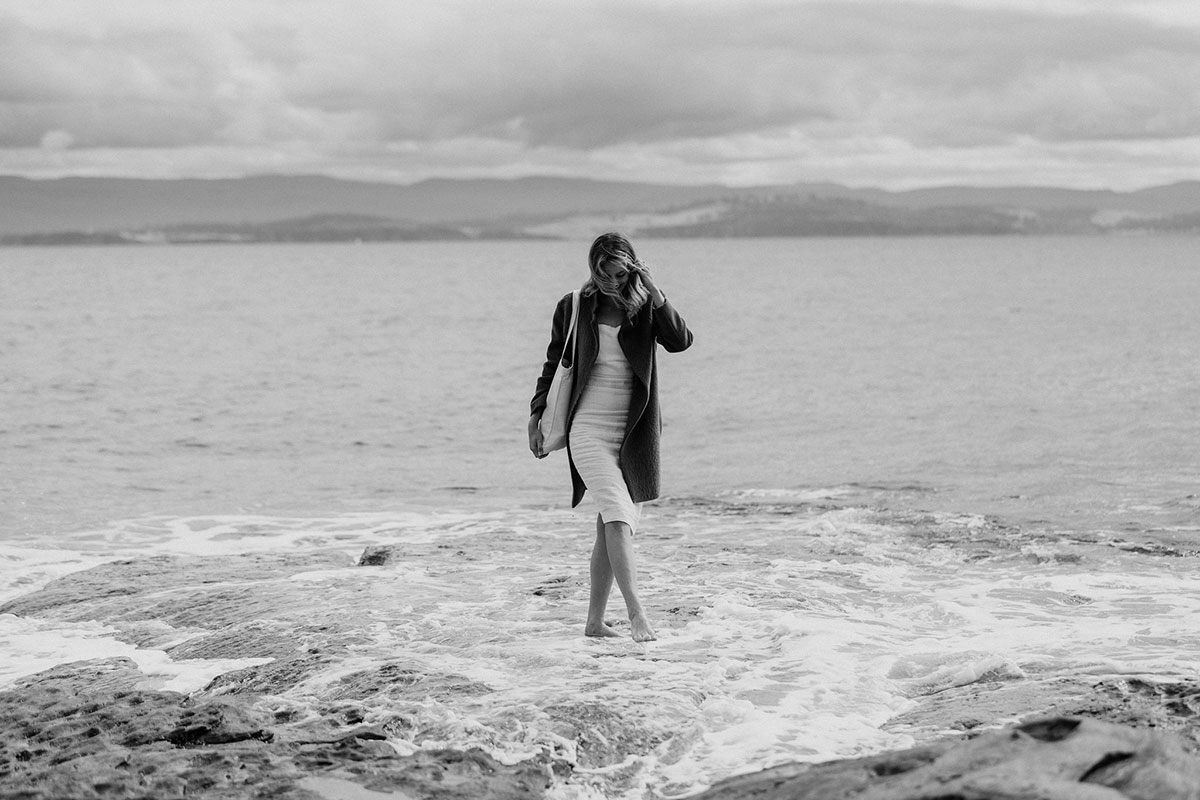
Image: Jesse Hunniford
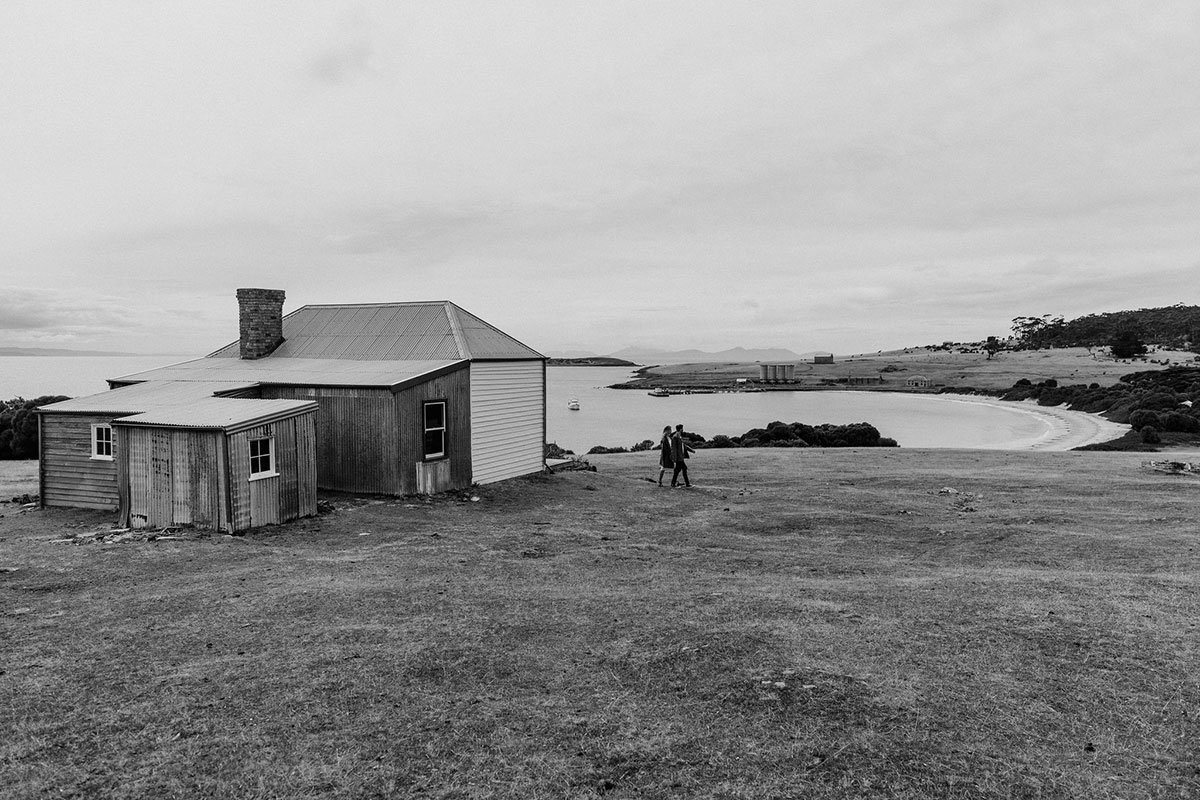
Image: Jesse Hunniford
As we ride back towards the ferry, the rugged summit of Bishop and Clerk begins to appear above cliffs that plummet to the sea. With only a few hours on the island, we have only scratched the surface. We are told it is possible to climb both Mount Maria, which at 711m is the island’s highest point, and Bishop and Clerk, which is a slightly lower peak. Both treks rise through abundant bushland and end with a more challenging clamber over rocky slopes to the summit.
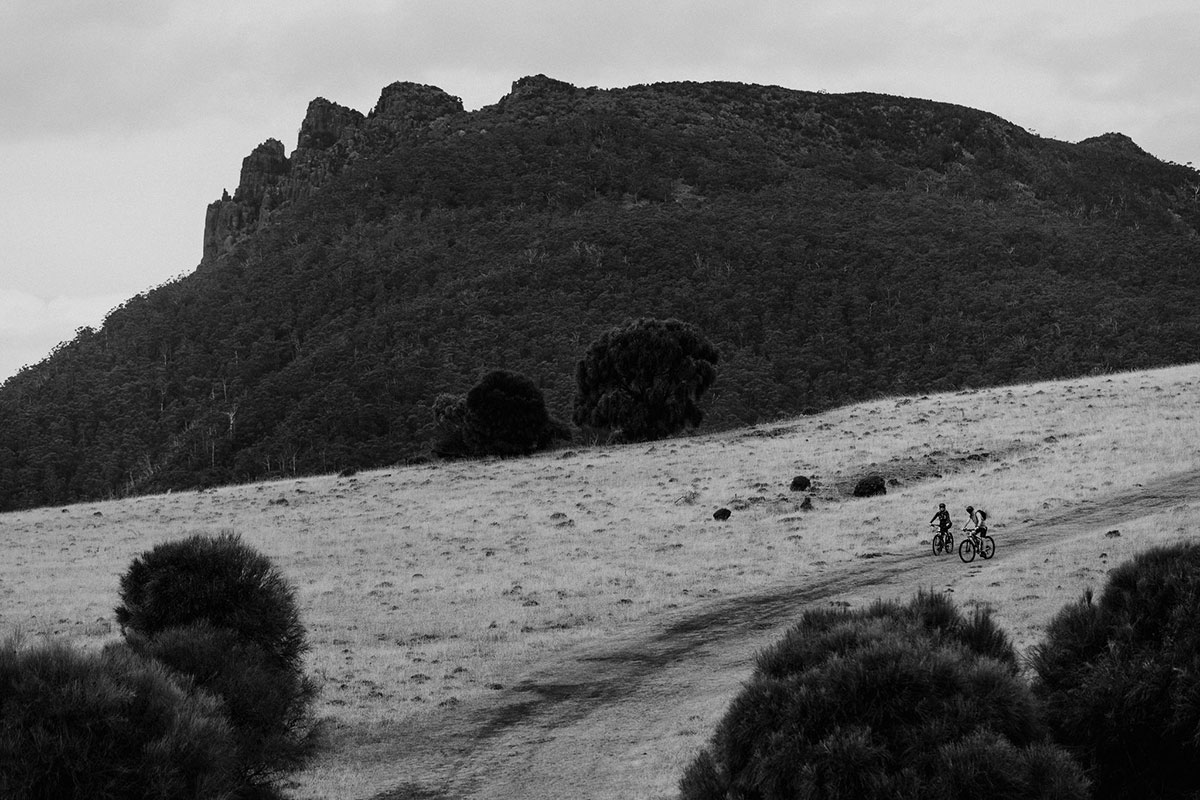
Image: Jesse Hunniford
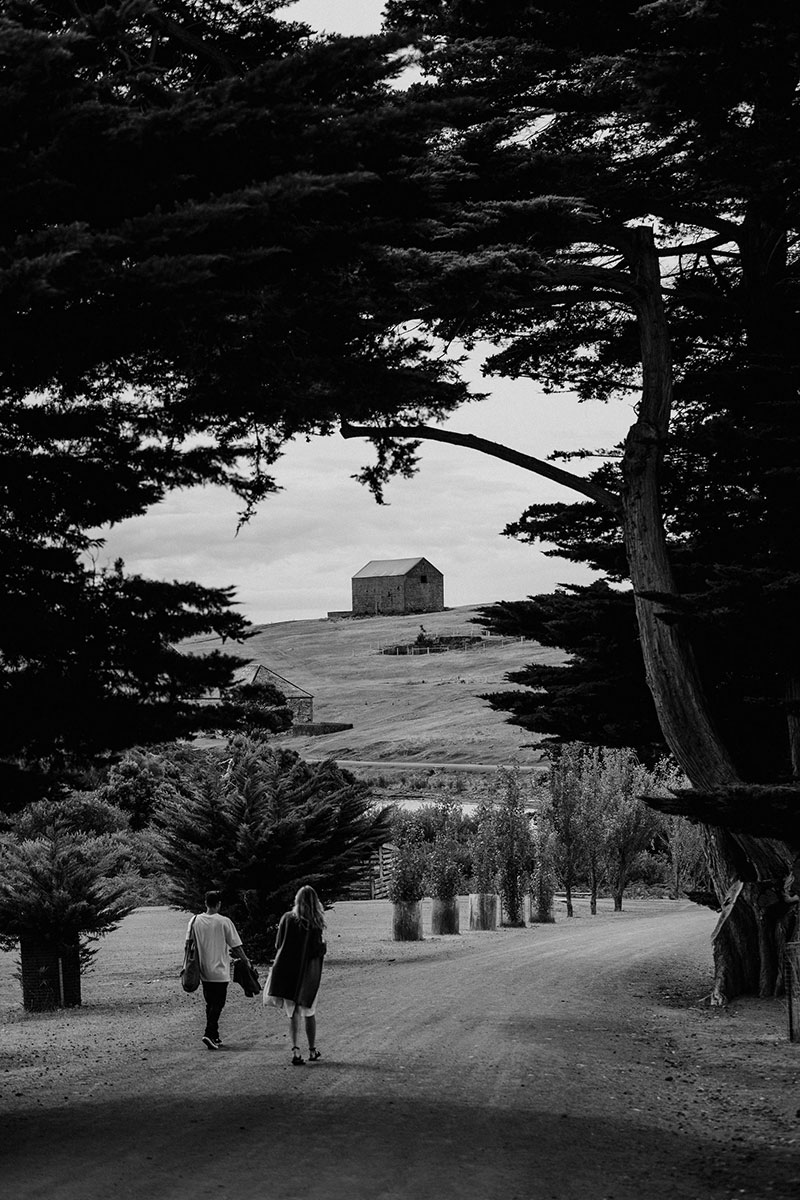
Image: Jesse Hunniford
Bruny Island
Our day on Bruny Island was soul-nurturing. We drove past honey-hued open pastures, walked along deserted beaches and dipped our toes in the ice-cold ocean water. We ate delicious cheese and quenched our thirst with craft beer. We devoured local oysters and tasted some uniquely Tasmanian wine. We were looked after by the locals and made to feel right at home.
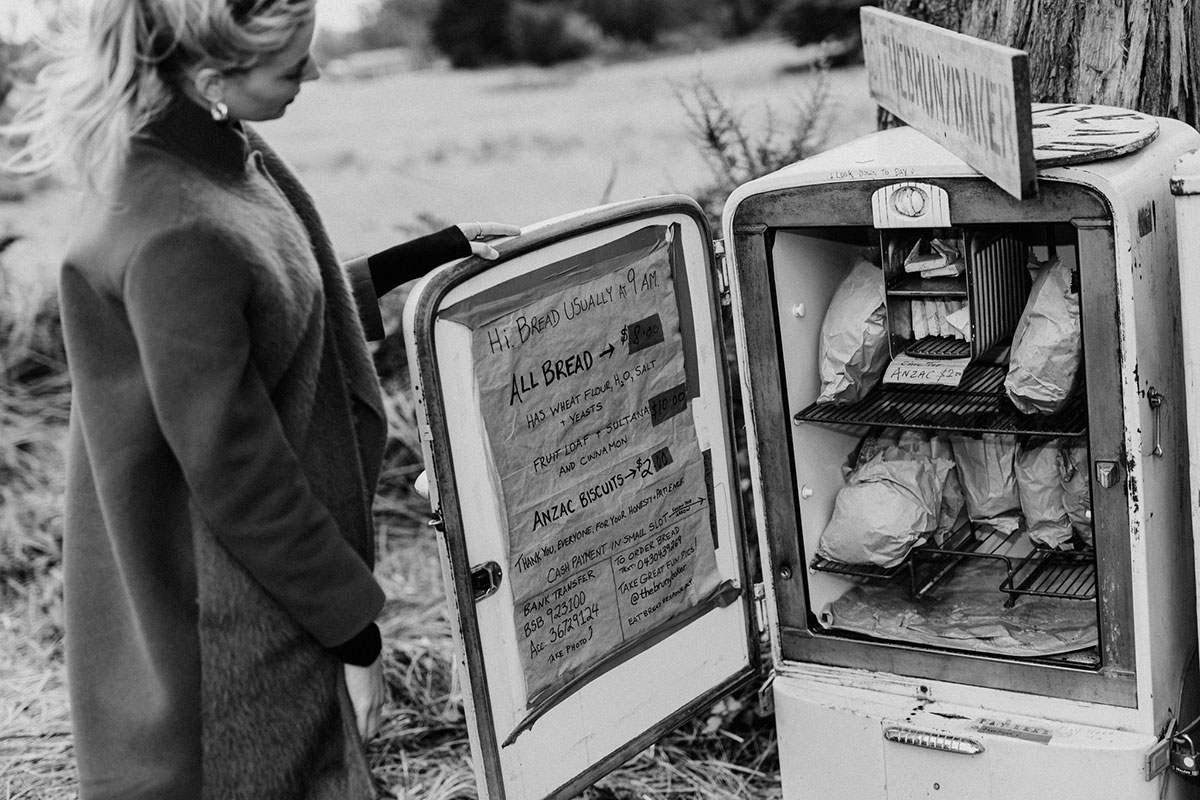
Image: Jesse Hunniford
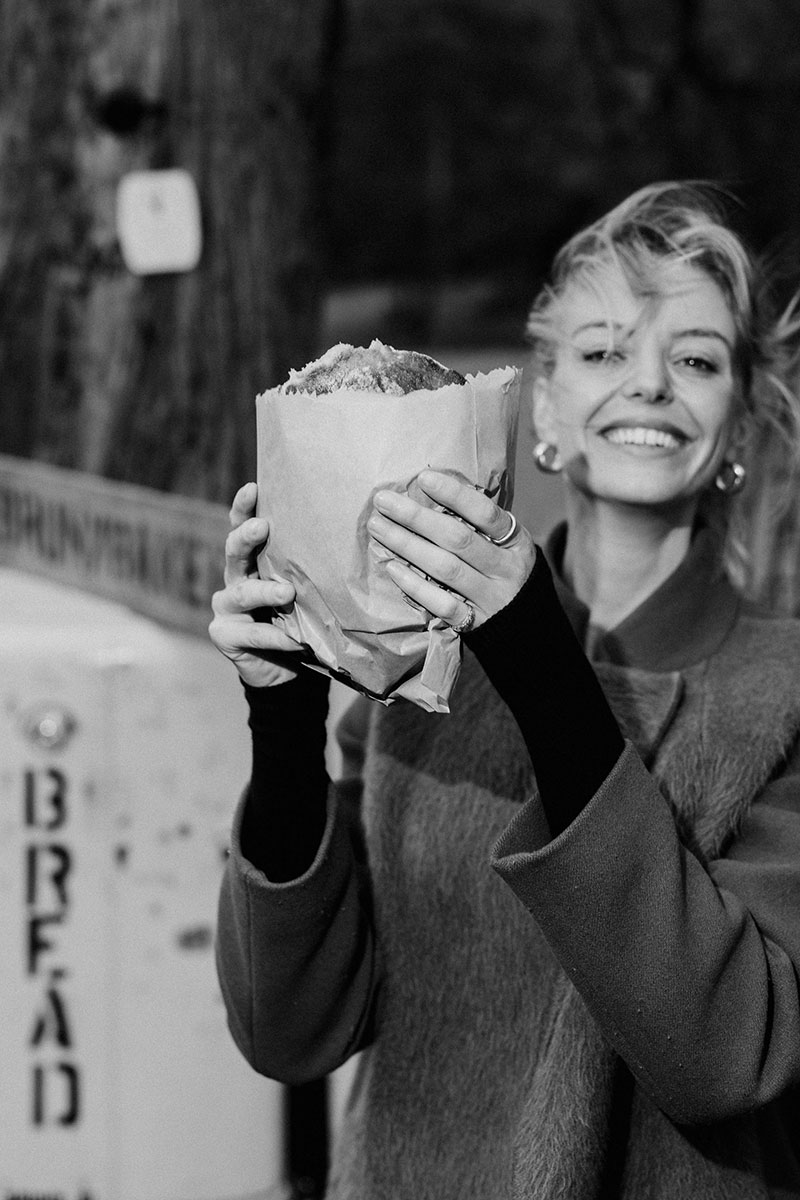
Image: Jesse Hunniford
A trip to Bruny Island would only be complete with a trip to the Neck Game Reserve. The reserve is an important area for native wildlife. The panoramic viewing platform is ideal for observing short-tailed shearwaters and little penguins. You can see these extraordinary birds returning to their burrows in the dunes at dusk. The little penguins make their way up the beach in tight groups, and the shearwaters glide in from the sea.
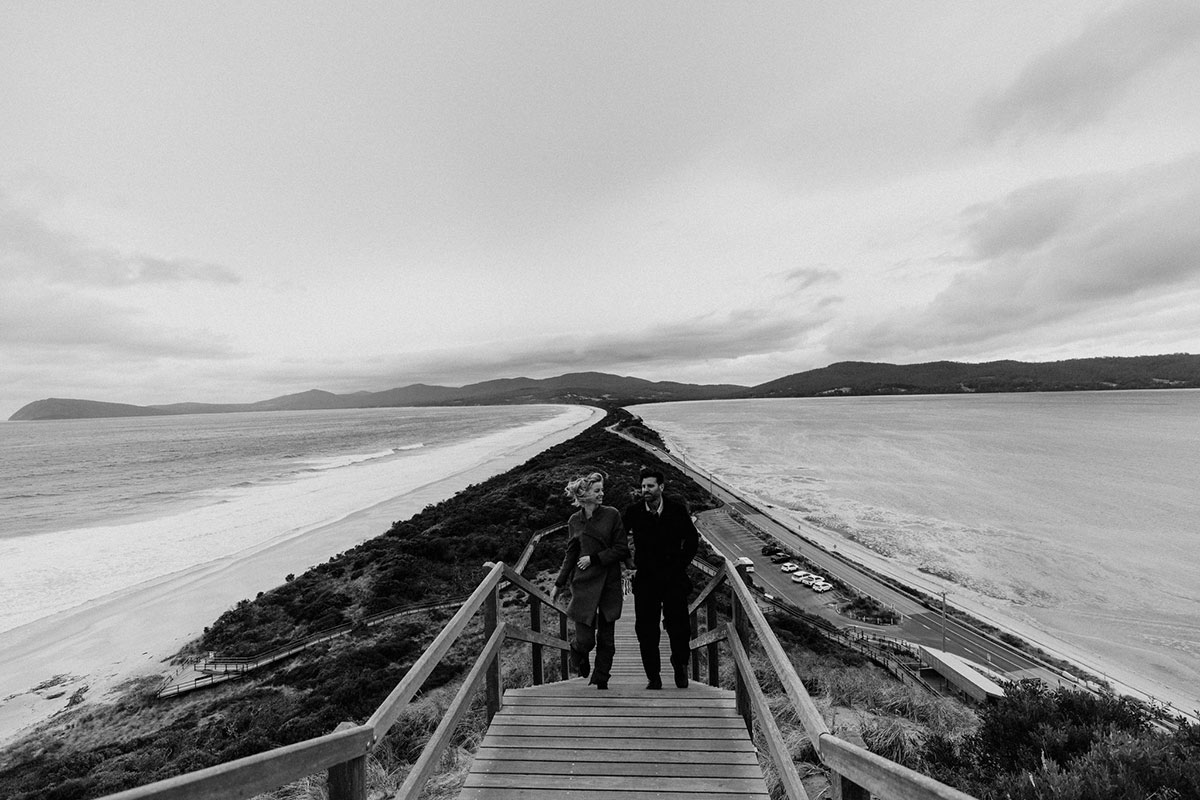
Image: Jesse Hunniford
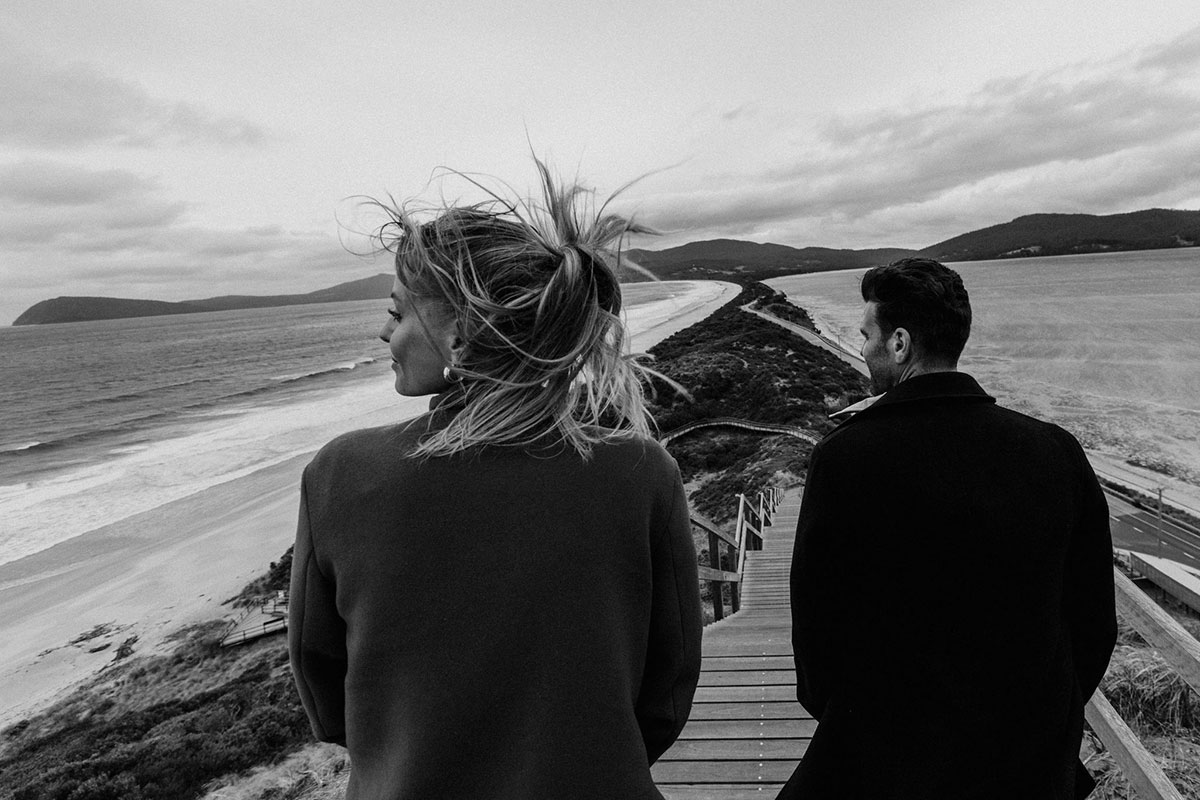
Image: Jesse Hunniford
Then it was time to go to Bruny Island Cheese Co. to warm up our bones. We devoured a sensational platter of their artisan cheese and tried some of the house-brewed craft beers on offer. Owner Nick Haddow and his dedicated team make iconic local cheeses with a strong sense of place. For Nick, it’s never been about replicating cheeses from other parts of the world. Bruny Island Cheese Co. has set the standard for many aspiring and new cheese makers in Australia, including being the only legally recognised raw milk cheese producer. In 2016, Nick started his own organically operated, rare-breed dairy farm in the Huon Valley. “That was an amazing step forward for us in terms of providing our cheese with a level of integrity, quality, flavour and control over everything from the soil through to the cheesemaking and maturation process,” says Nick. Bruny Island Cheese Co. offers unique Off Season experiences: a tour of the Glen Huon Dairy Co. farm, and winter cheese feast on the island.
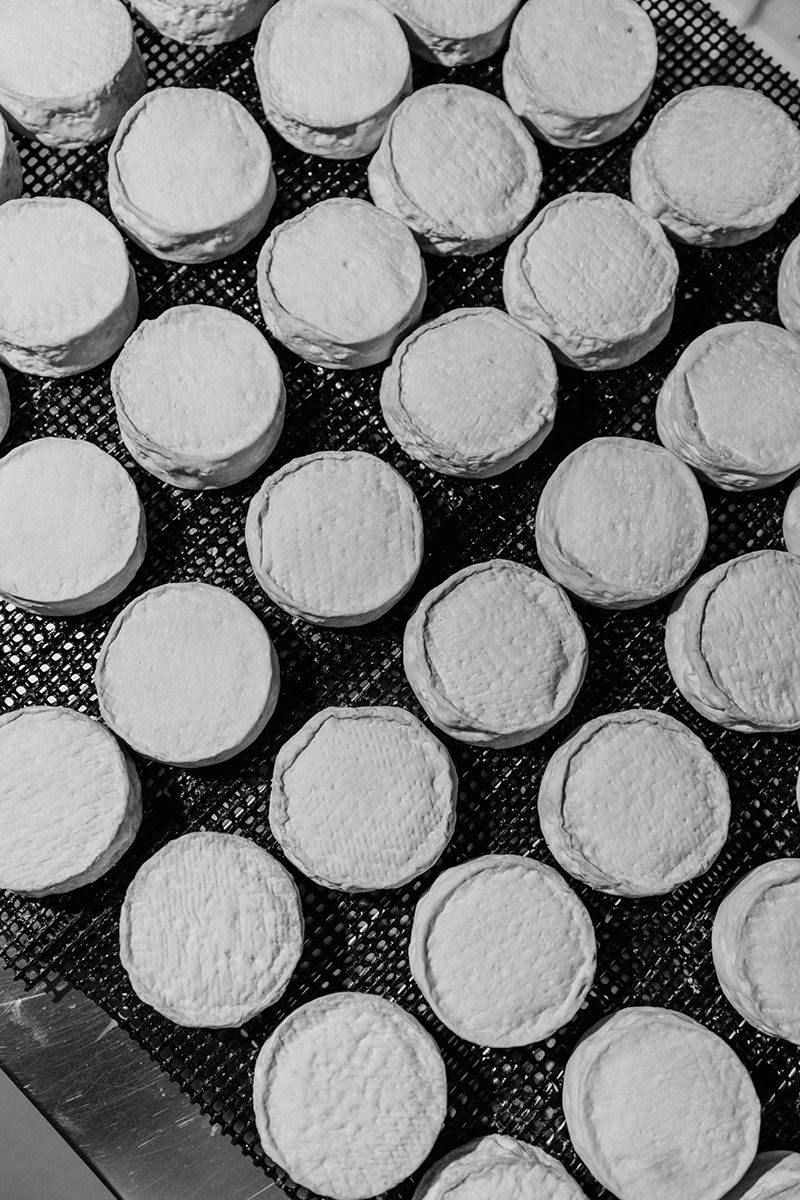
Image: Jesse Hunniford
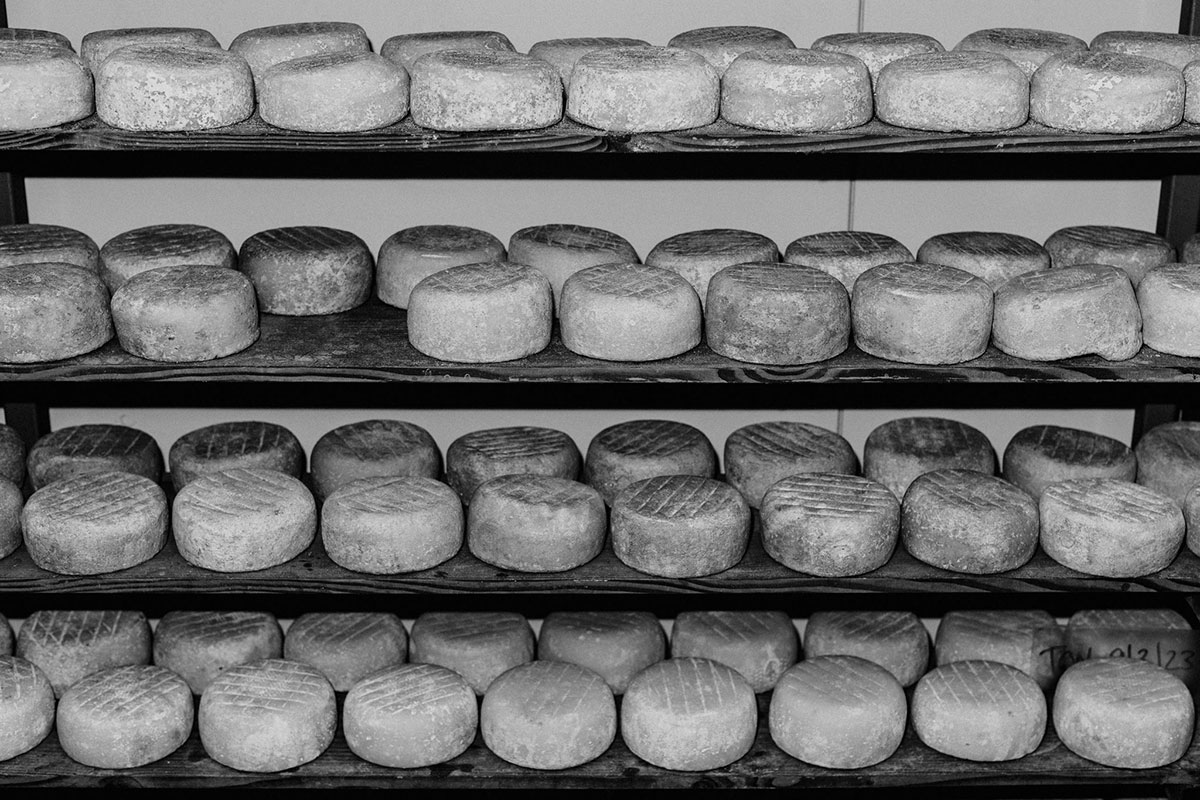
Image: Jesse Hunniford
Nick beams as he tells me that the Off Season in Tasmania is the best time of year. “That period between autumn and spring, there’s a sense that you’ve got the place a bit more to yourself,” he says. “If you’re going to come to Tassie in the middle of winter, rug up. Go for a walk on a beach by yourself. Breathe in that air that is the purest in the world. Go for a drive or walk through the wilderness areas of western Tasmania; it’s fantastic. Embrace our produce. Sit before a fire with a glass of Tasmanian whisky or pinot noir, and eat some of our incredible seafood, lamb, or beef. It’s a really special experience.”
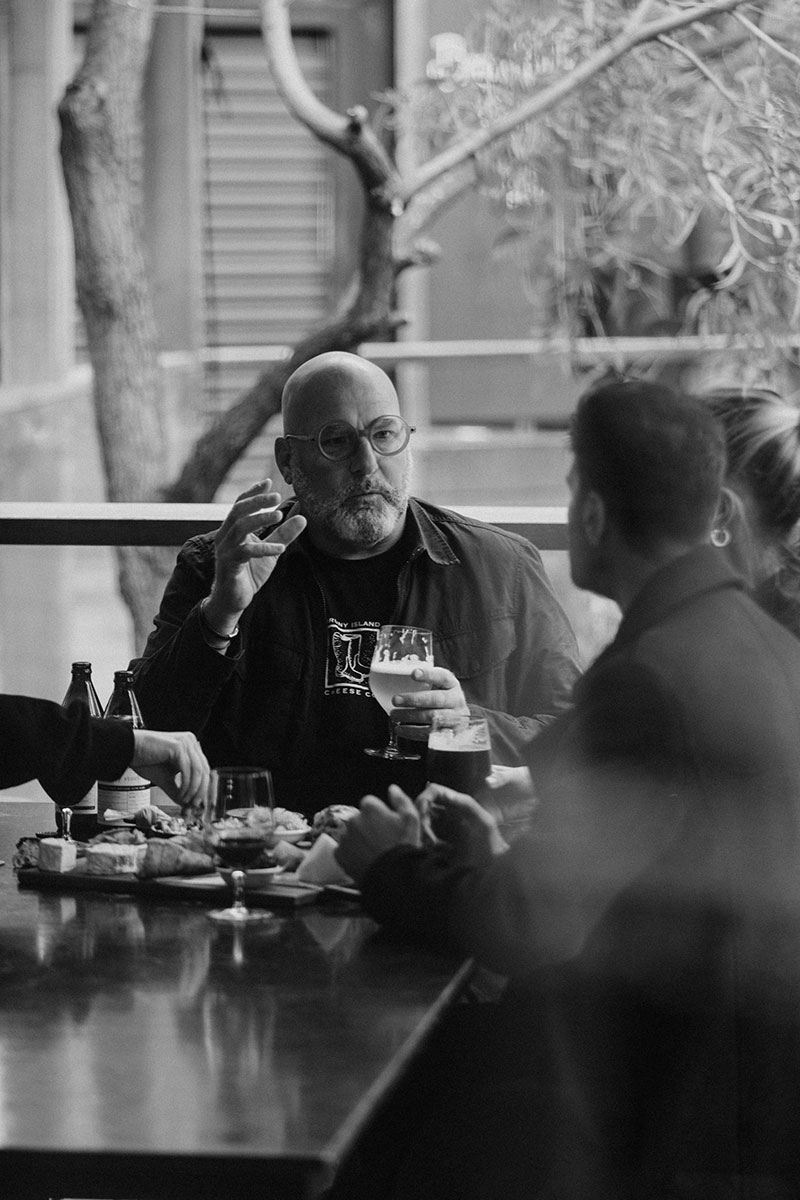
Image: Jesse Hunniford
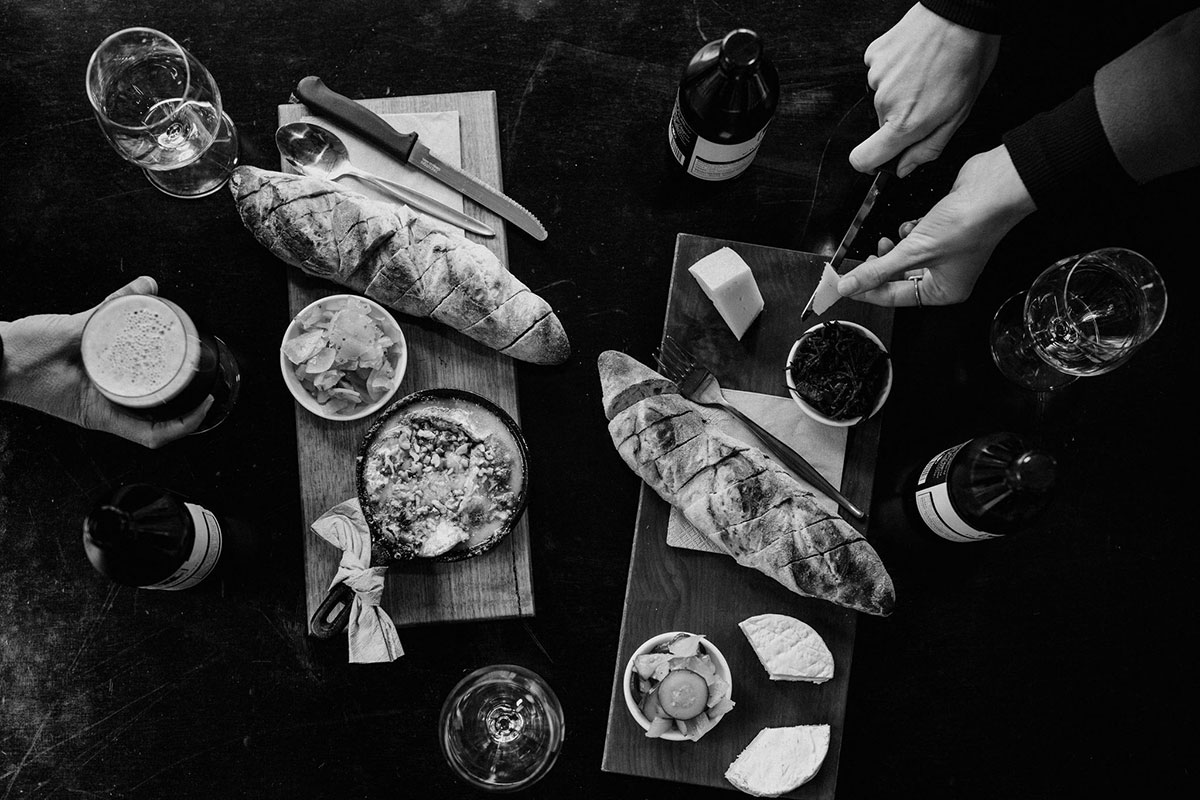
Image: Jesse Hunniford
We then stopped at Bruny Island Premium Wines, where we had a great time hanging out with native Bruny Island singer-songwriter Maddy Jane and her mum, Bernice. Maddy Jane is known for her distinctive indie pop/rock style and captivating and honest melodies. When asked to describe her musical style, Maddy tells me, “It’s truthful and lyrical; it’s very Australiana. My exposure to music growing up was sitting around the fire at my local pub, listening to Aussie rock. So, that Australiana style will always be a part of me. I think honesty comes from being Tasmanian.”
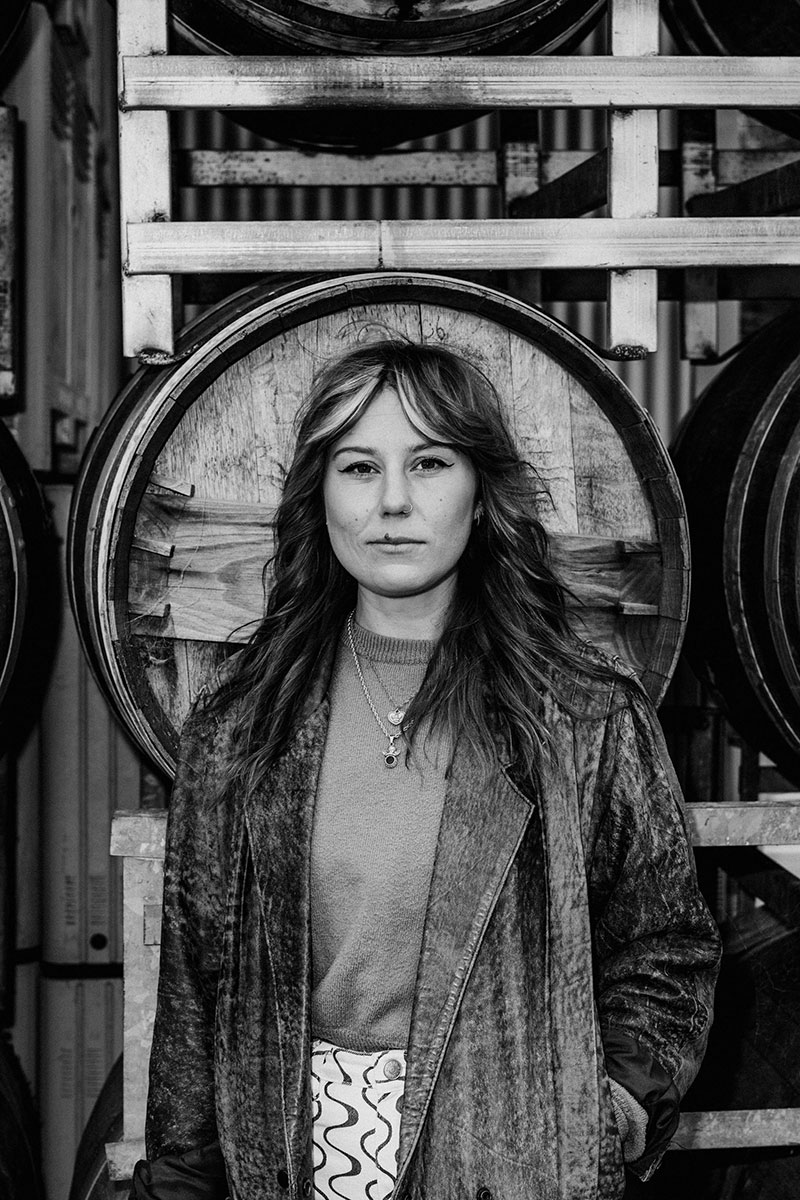
Image: Jesse Hunniford

Image: Jesse Hunniford
The island is a place of refuge for Maddy, where she can reconnect with the land and her family. “Coming home is always a reflective time for me. It’s a quiet little island, especially at this time of year in the Off Season. For me, Tassie in the wintertime is the real Tasmania. It’s raw and wild; the cold is unapologetic. It’s always a humbling experience. Winter is when you experience Tasmania at its wildest, darkest and most free. It’s when I’m at my most creative; I do a lot of songwriting in the wintertime,” she says.
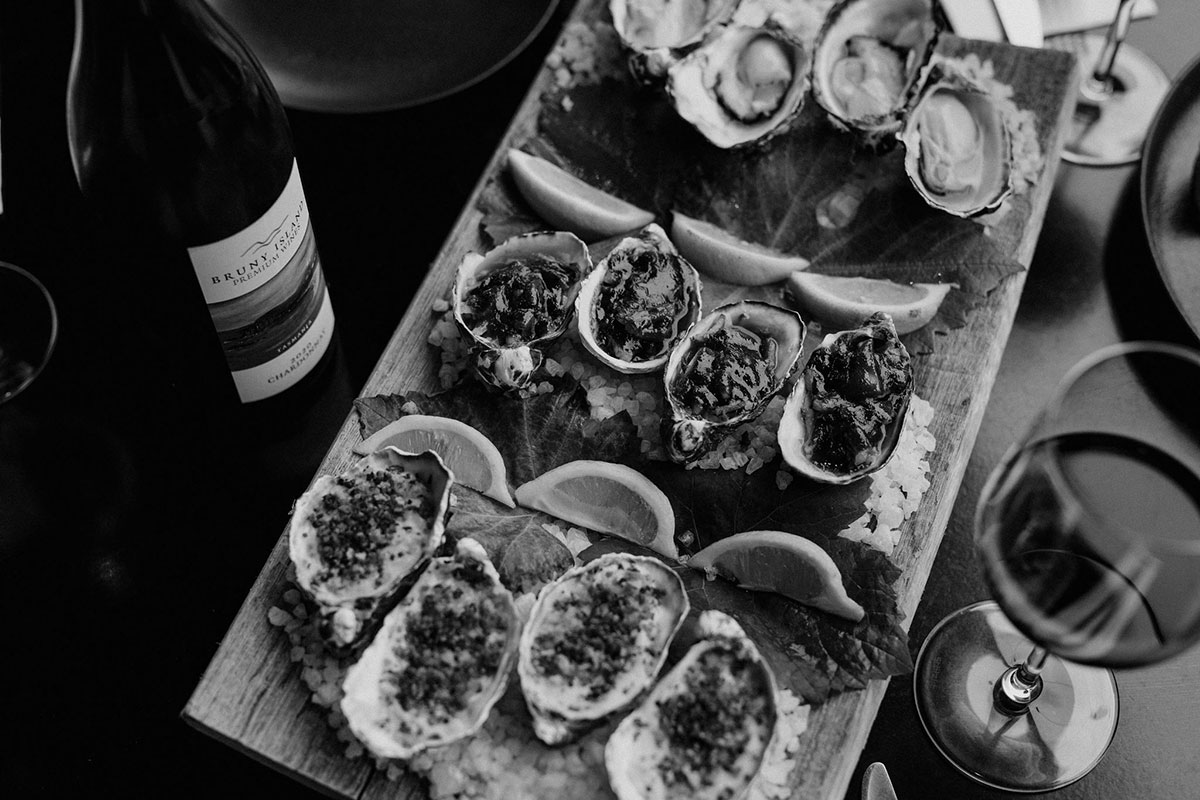
Image: Jesse Hunniford
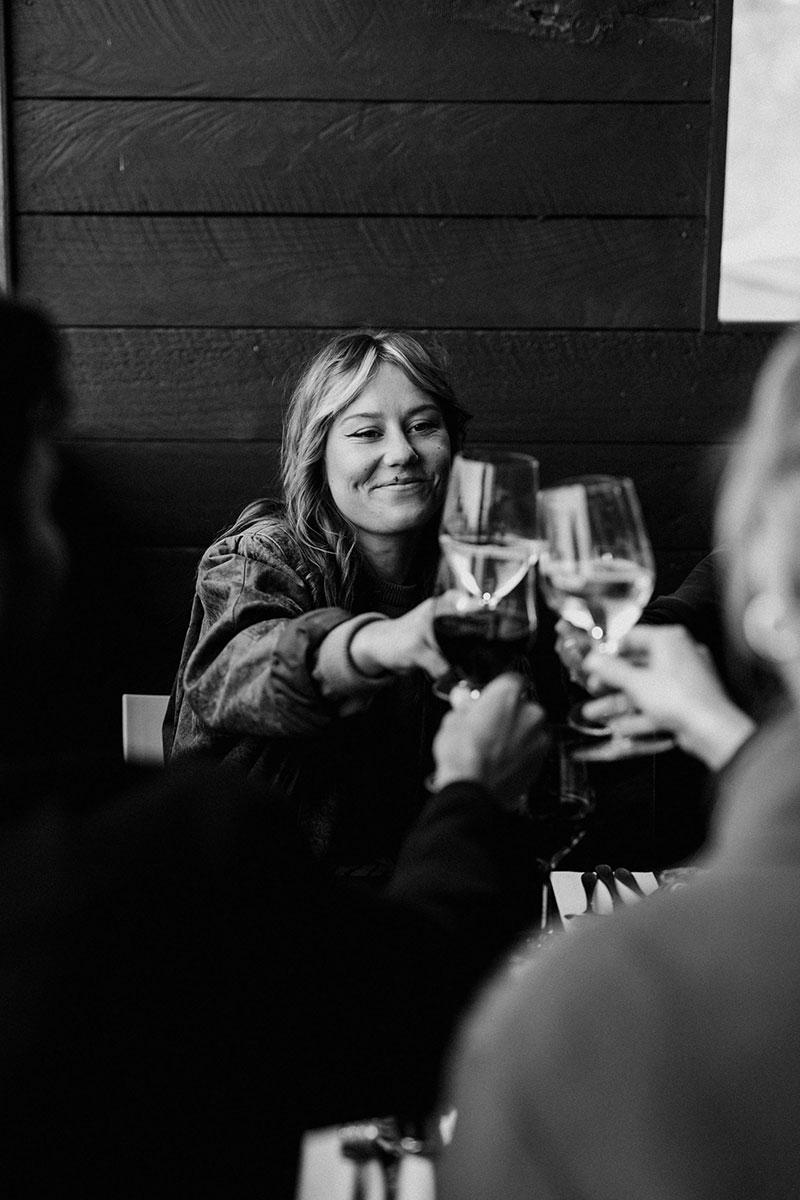
Image: Jesse Hunniford
The family have lived on Bruny Island for many generations. They fondly call Maddy’s grandfather ‘”the instigator” because he propagated and planted the first 1500 vines on the property. The vineyard now boasts 6000 pinot noir and chardonnay vines. When asked about her favourite spots on the island, Maddy says, “Jetty Beach campsite, near the lighthouse, is just beautiful. I also love Mount Mangana; it’s a very special place. Places like Mount Mangana are sacred, and it’s important to remember that Bruny Island has a deep history. When you come to Bruny, many ways exist to connect with indigenous history.”
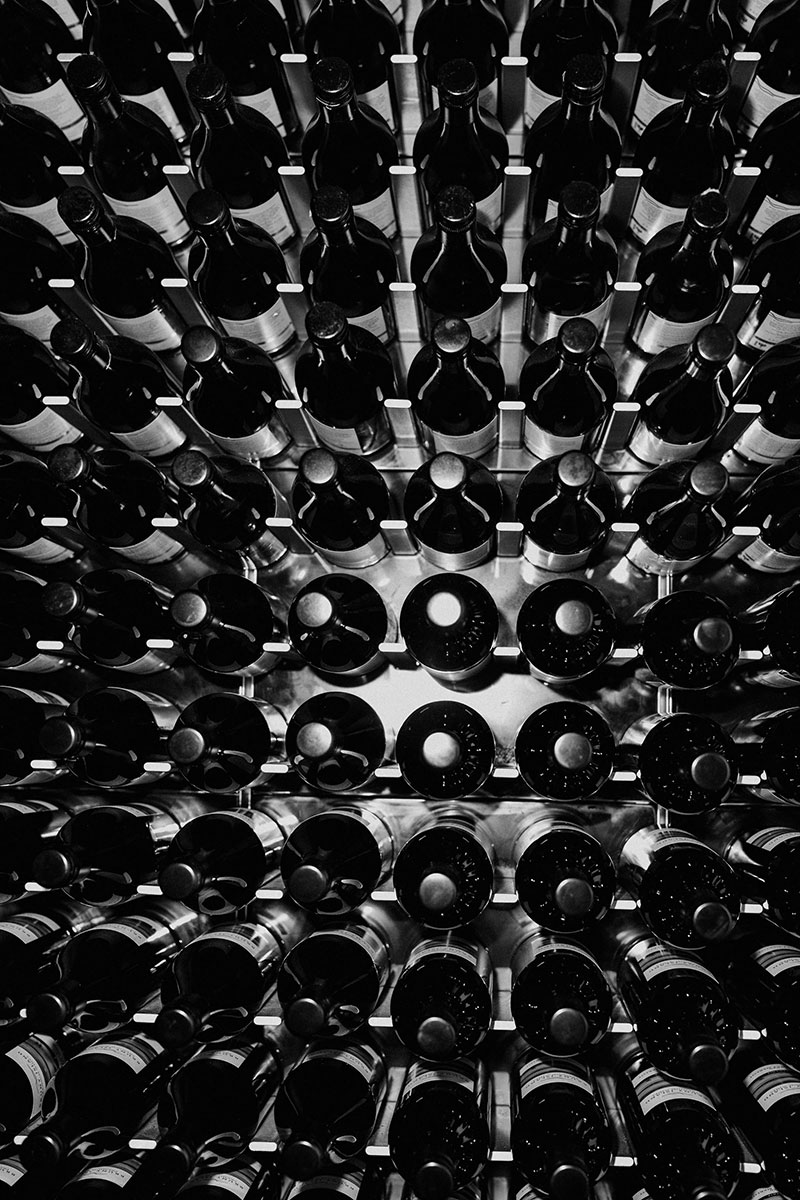
Image: Jesse Hunniford

Image: Jesse Hunniford
Hobart
Hobart is a harbour town abuzz with festivals, museums, urban wineries, craft-beer bars, old pubs and fine-dining restaurants. The majestic kunanyi / Mount Wellington towers over the city, and the expansive River Derwent twists and sweeps its way through. The city oozes laid-back charm and a sense of history. On a winter’s day, it’s a city full of possibilities.

Image: Jesse Hunniford
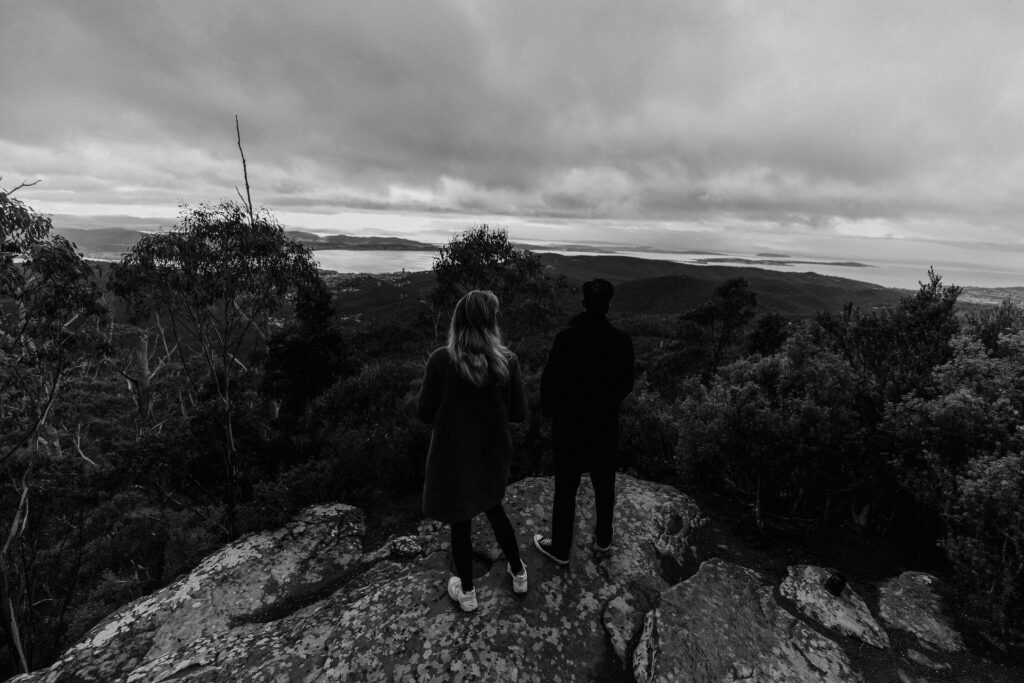
Image: Jesse Hunniford
kunanyi towers 1271m above Hobart, and its citizens find comfort in its continual, grounded presence. For Hobartians, the mountain is a place to frolic in the winter snow, connect with nature, walk, run and ride mountain bikes. A trip to Hobart would only be complete with watching the sunrise atop the glorious mountain, so we braved the elements. It was magical to experience the dramatic views, boulder fields and ferny valleys as dawn broke over the mountain.
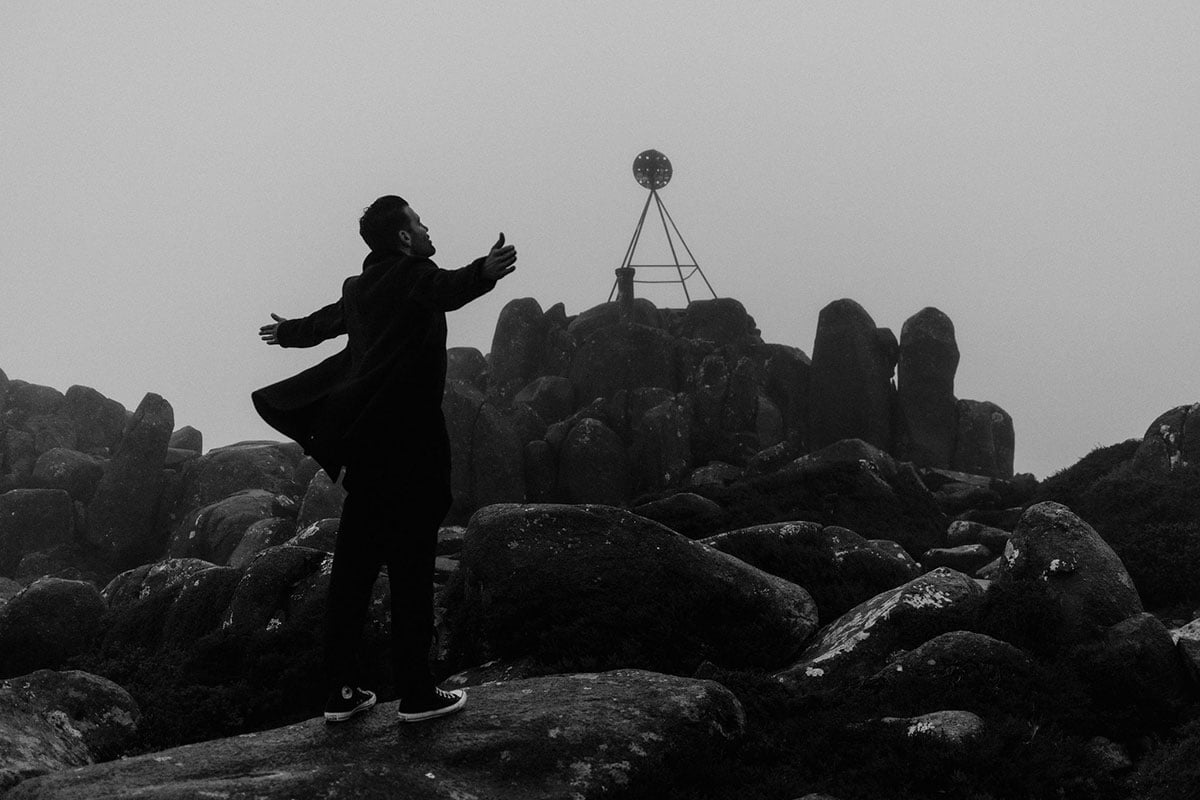
Image: Jesse Hunniford
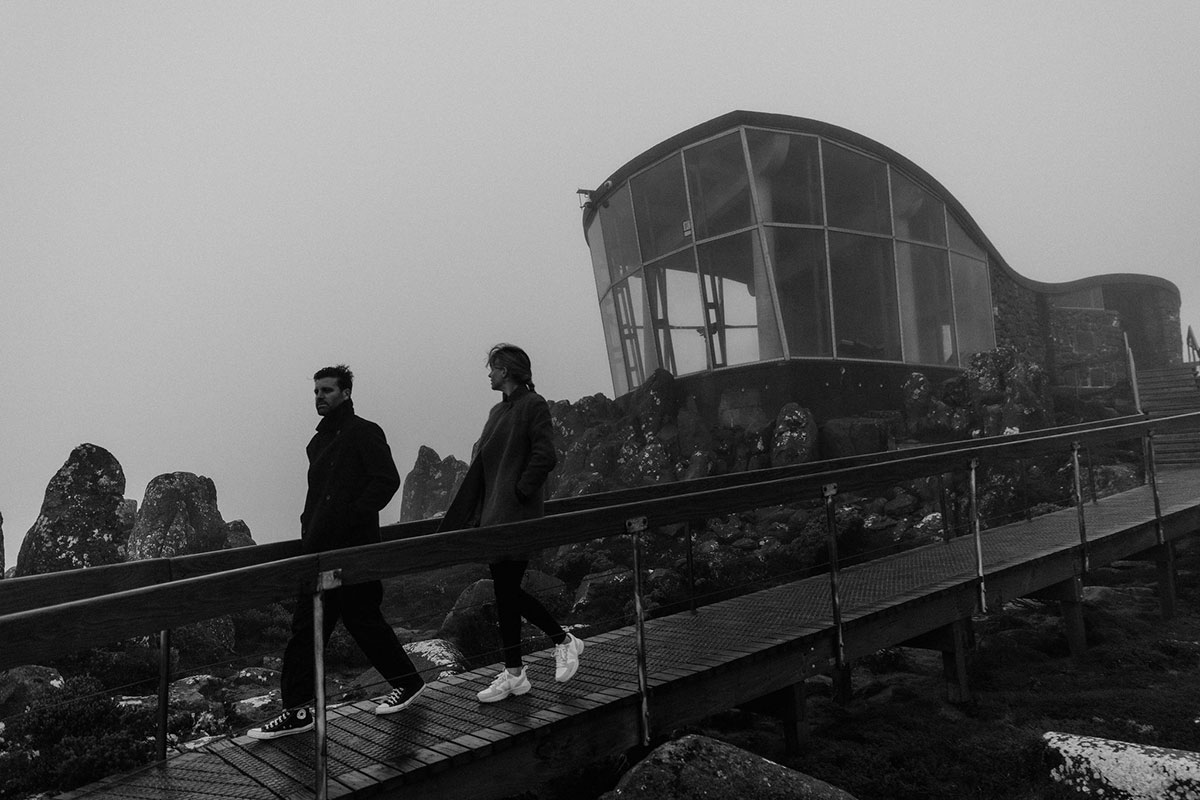
Image: Jesse Hunniford
The next stop was Mona. The museum is a bewildering exploration of the human condition. Themes such as birth, life, death and sex are presented in every conceivable way. It’s like entering into a weird, wacky and unhinged parallel universe. As part of the ‘Mona Like A Rockstar’ experience, we had the opportunity to dine at light-drenched, experimental restaurant, Faro. The menu features wild-caught, sustainably sourced seafood, and you will not find any commercial meat on the menu: instead, only game meats such as venison and wallaby are on offer. The menu is influenced by artist and curator Kirsha Kaechele, who released a cookbook titled Eat The Problem; the book is focused on invasive species and sets out to challenge ideas about sustainability and cooking. Each recipe features an invasive species that has devastated the native biosphere. Think crispy-skin cane toad, snake jerky (snerky), feral camel toes, and myna bird parfait, all washed down with a boar’s eye Bloody Mary.
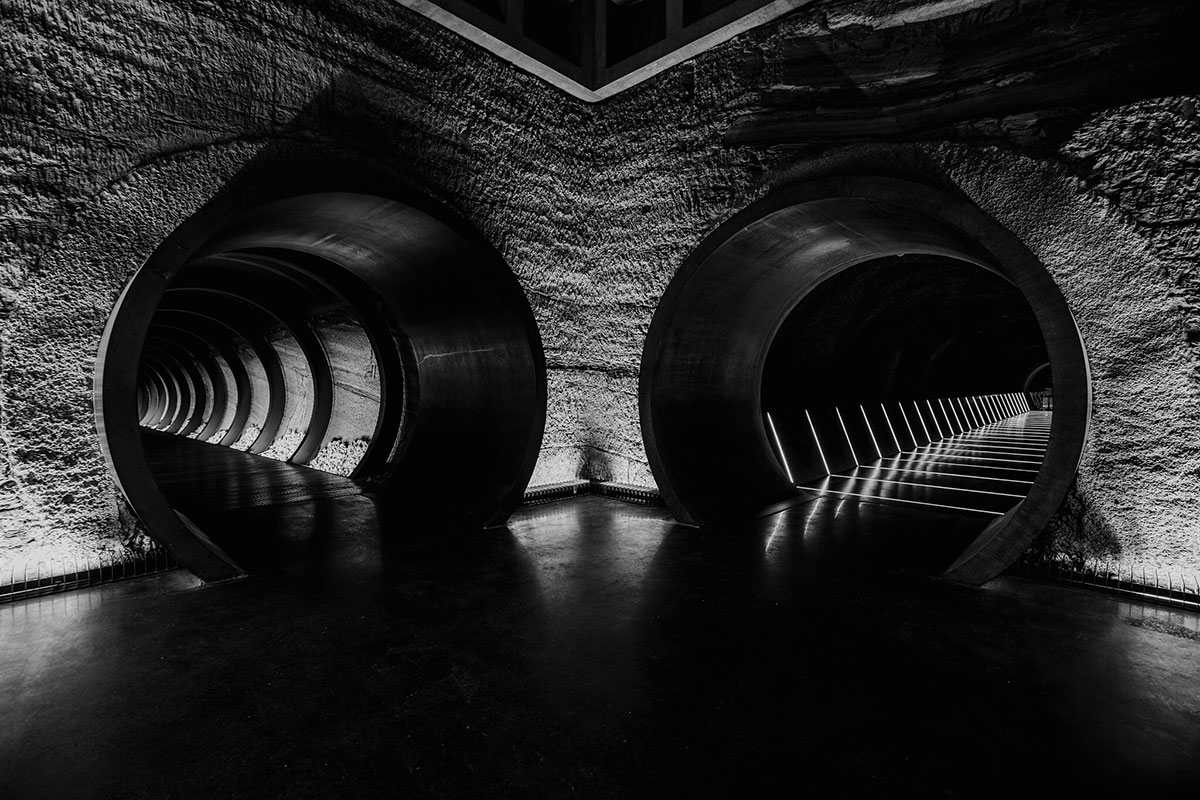
Image: Jesse Hunniford
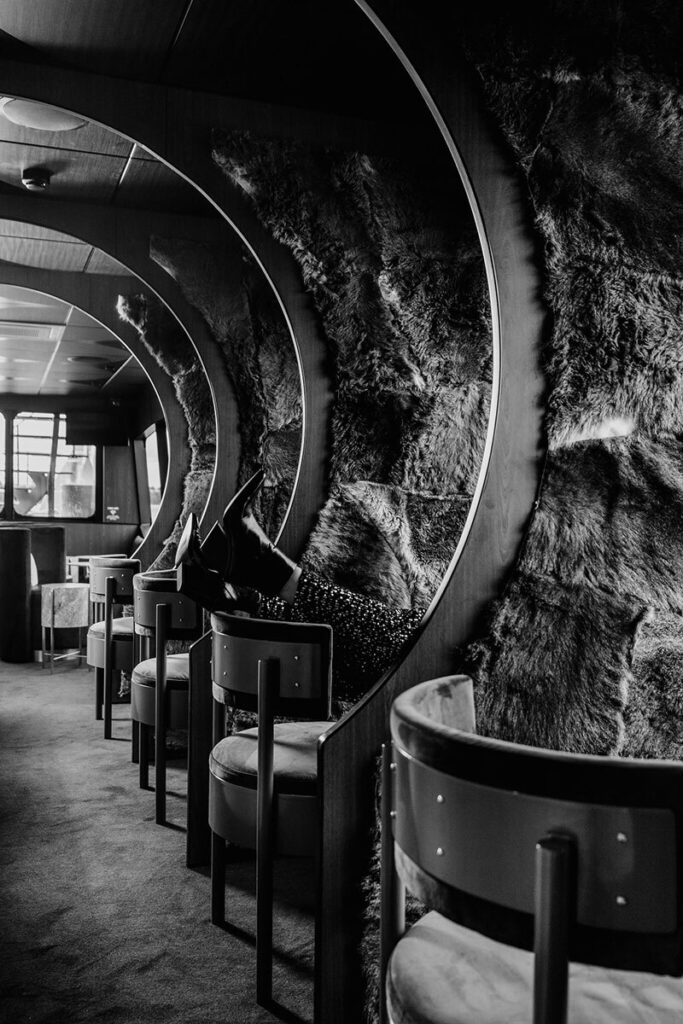
Image: Jesse Hunniford
A booking at Faro also gives you exclusive access to three installations by James Turrell, whose work explores light and consciousness. His exhibition, Seen Unseen, can be entered through a large white dome in the restaurant. The display is to be viewed in pairs, so I enter alongside my colleague. We are asked which setting we would like, hard or soft, and then given a panic button. If I am beginning to feel apprehensive, I try not to let it show. We decide on the hard setting and then are guided to a thin mattress where we lay down and gaze upwards expectantly. A psychedelic light show begins, and I am completely mesmerised by the appearance and potency of the light and colours that are creating crazy patterns above me. Viewing the work is as close to a hallucinogenic experience as you will get without taking any substances. It is a remarkable thing to be right inside an artwork; my mind feels very still. It’s an otherworldly experience, like a sort of mental orgasm.
The next instalment of the artwork is called The Weight of Darkness, and it requires you to make your way through stark blackness to an awaiting chair. There is no stimulus, but incredibly, I continue visualising the light show anyway. It’s a phenomenal experience.

Image: Jesse Hunniford
After a day delighting our senses at Mona, it’s time to head back into the city, where we meet local band Luca Brasi at The Hanging Garden. The venue is a nature-shrouded cultural precinct covering nearly a whole block in the heart of the city. It’s a place where Hobartians go to watch live music, indulge in food and drinks and stay for late-night dance parties.
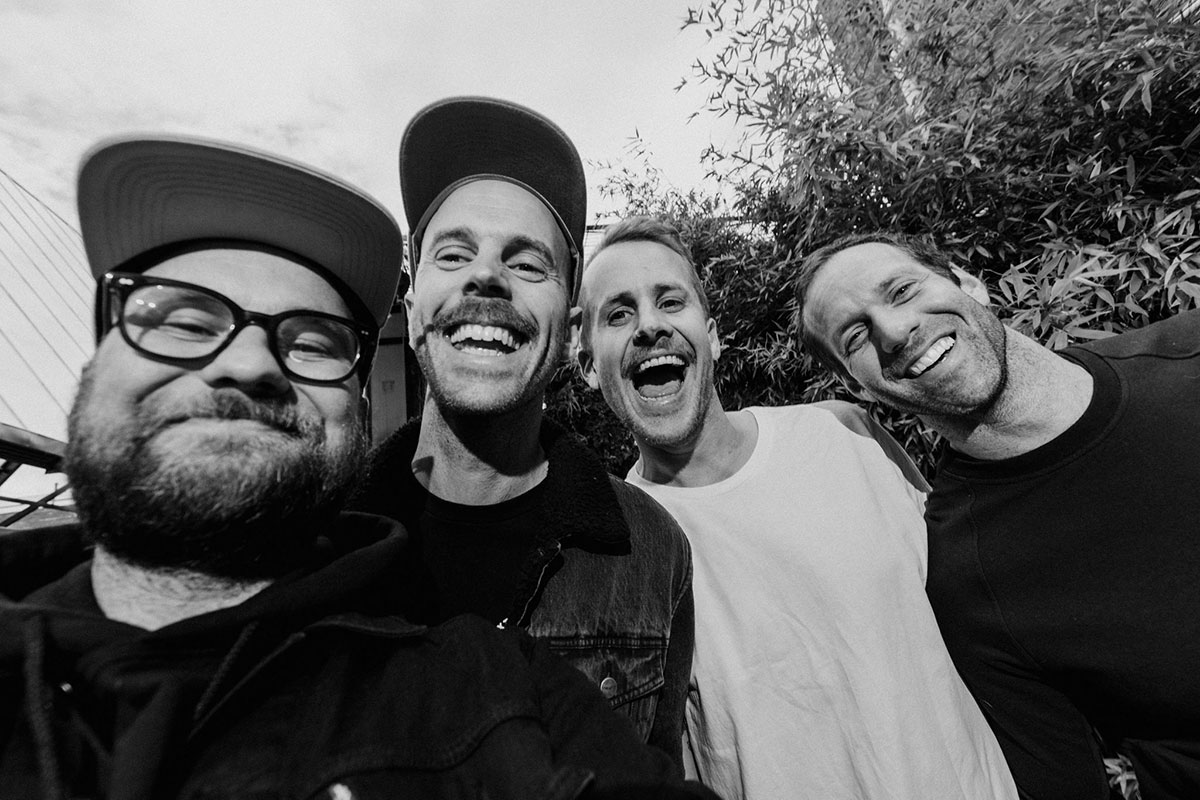
Image: Jesse Hunniford
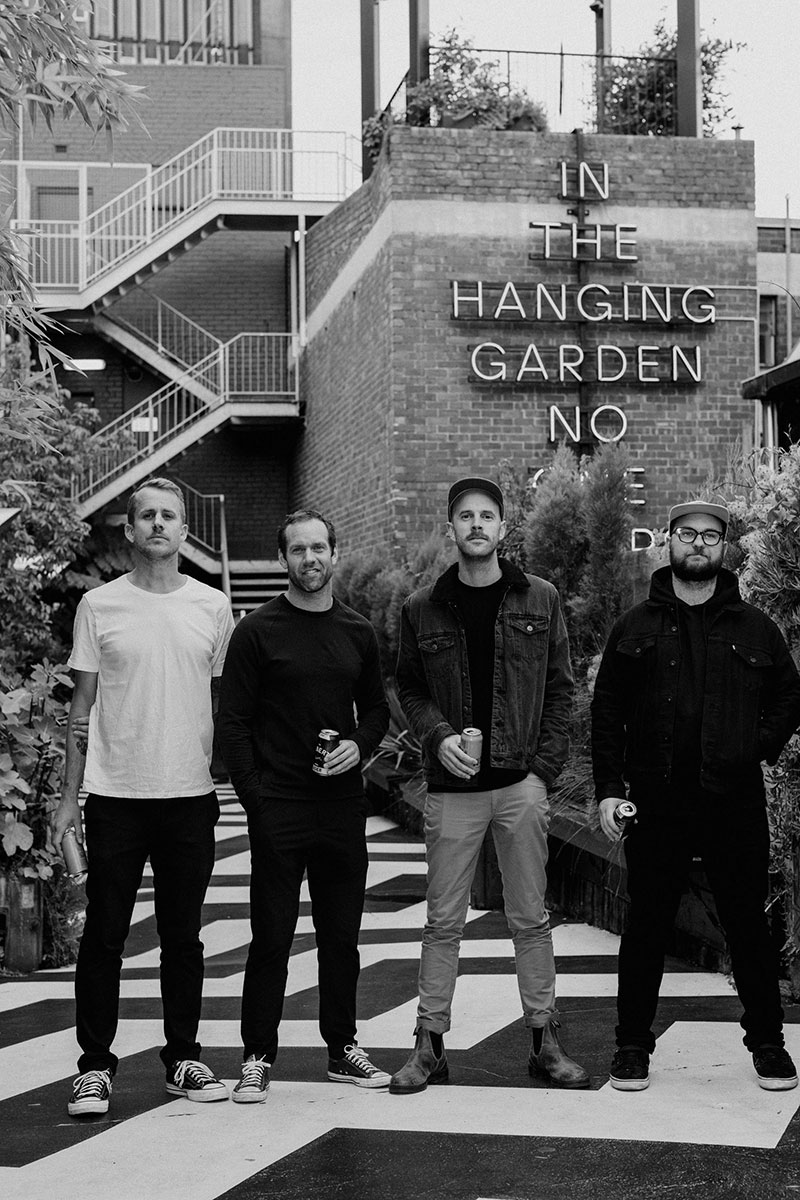
Image: Jesse Hunniford
Luca Brasi is an Australian rock band that formed in St Helens, on Tasmania’s east coast, in 2009. The present line-up of the band features Thomas Busby on lead guitar, Patrick Marshall on rhythm guitar and vocals, Danny Flood on drums, and Tyler Richardson on lead vocals and bass guitar. They have released five studio albums: Extended Family (2011), By A Thread (2014), If This Is All We’re Going To Be (2016), Stay (2018), and Everything Is Tenuous (2021). Stay became their first ARIA top 10 album.
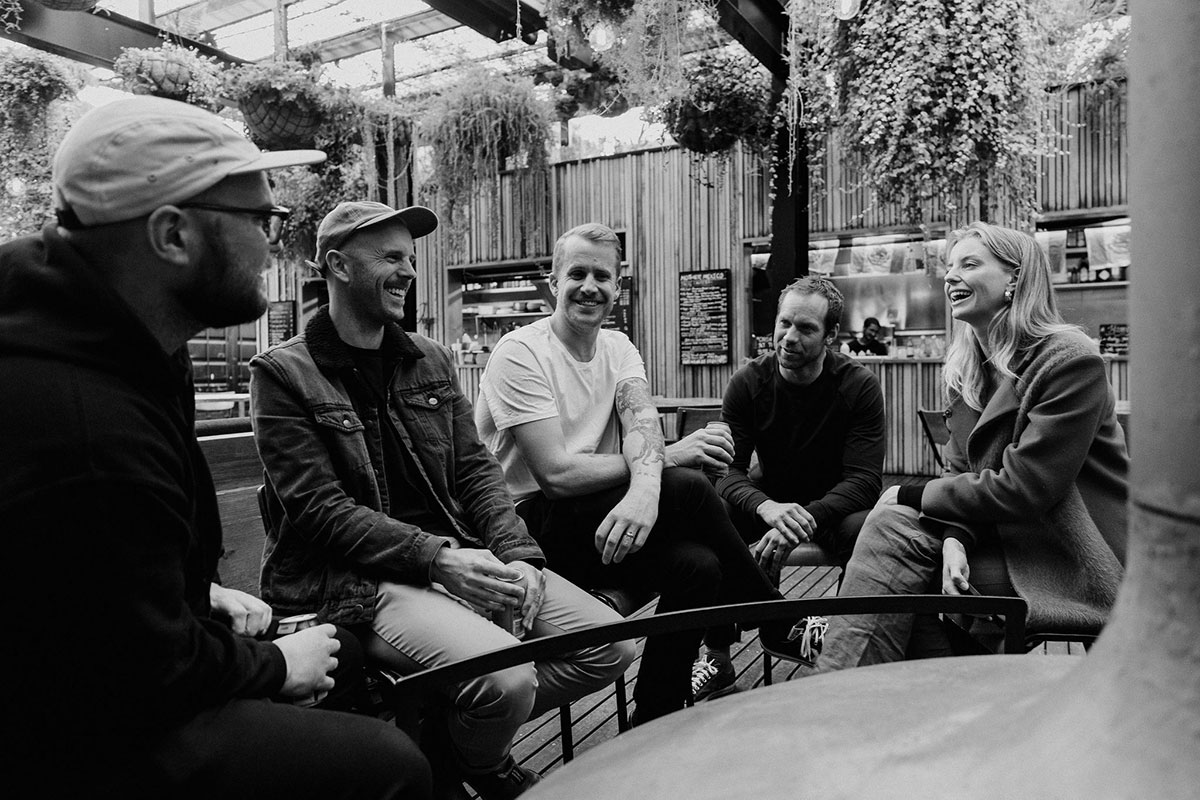
Image: Jesse Hunniford
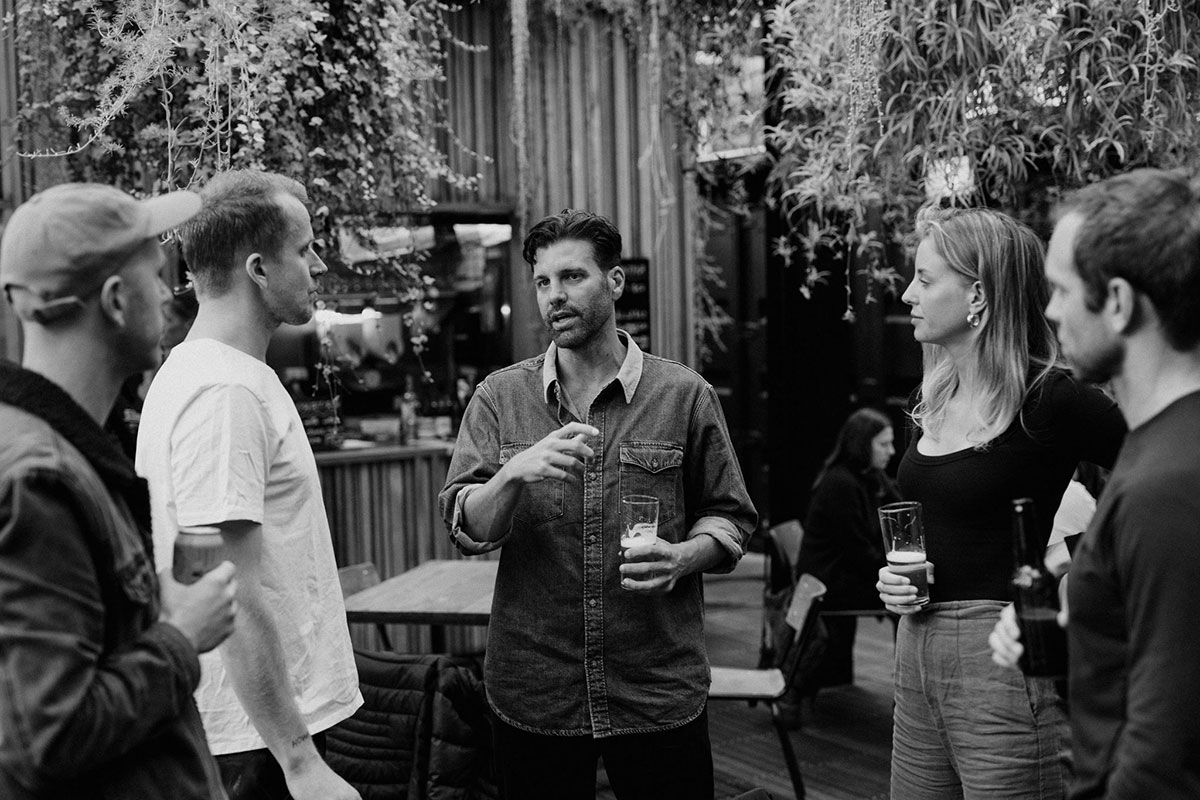
Image: Jesse Hunniford
The Luca Brasi boys, who have called Hobart home for many years, are our authority on the city. “You’re in a capital city, but in 30-minutes, you can be at the beach or on top of a mountain. That’s what I love most about living here; you’ve got the best of both worlds,” says Danny. It’s cool outside, but we’re sitting around a fire and have started to warm up and peel off layers. I ask them what they love about winter in Hobart, and they all agree Dark Mofo is a highlight. “If you put on Dark Mofo in summer, it just wouldn’t have the same feel; you’d be missing the point,” says Pat. “It’s something to look forward to, to bring us all together in the darkest and coldest part of the year,” adds Thomas. “It’s been amazing for Hobart.”
It’s clear that Tasmanians really know how to embrace winter rather than escape it. So, rug up, and come see for yourself this Off Season.
This article is produced by Rolling Stone Australia in partnership with Tourism Tasmania. Explore more wild, weird and wonderful experiences during Tasmania’s Off Season.



































